Protections in place in
Spring into into gardening





A permanent memorial has been installed in memory of a man who, for more than a decade, cheered up countless schoolchildren, residents and motorists.
Peter Van Beek, Buderim’s beloved

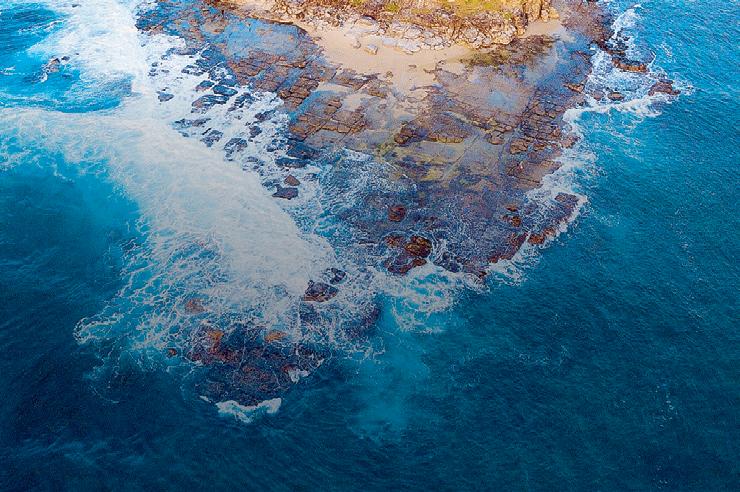

’waving man’ will forever be in our hearts now that his famous roundabout at the intersection of Stringybark and Ballinger roads has been named in his honour.


Sunshine Coast Council Division

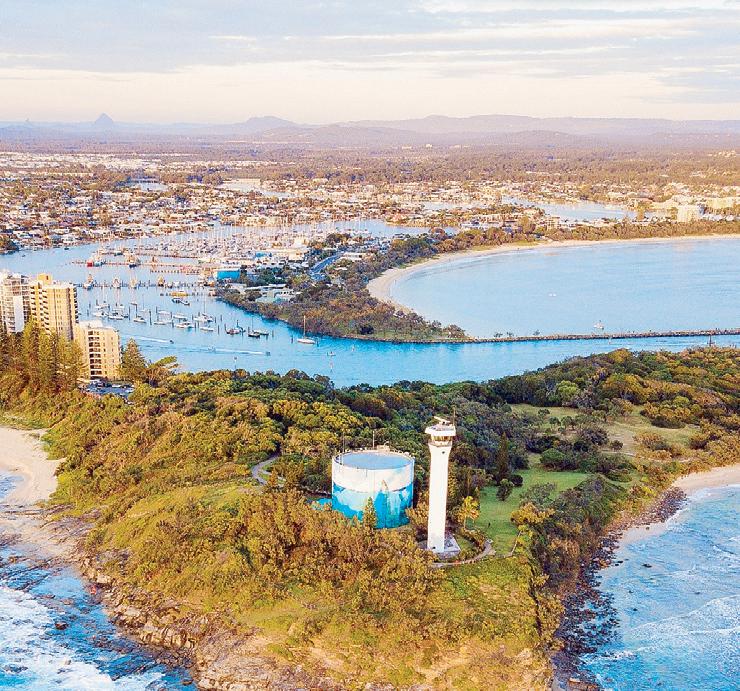



Seven Councillor Ted Hungerford said he was honoured to unveil the “Peter’s roundabout” sign which will forever commemorate Mr Van Beek.
“I thank the community for sharing with council their desire to remember
Peter, who stood on the grassy roundabout opposite his home for hours every day to greet passers-by with his contagious smile and friendly wave,” Cr Hungerford said.
MARGARET’S MISSION .........page 4
GREAT ESCAPE ................... page 6
‘BLOOMIN’.......................... page 9
IN PROFILE .......................page 10
HEALTH ................ pages 11-15, 19
HISTORY .........................pages 16
RECIPES ...........................page 18
ARTS/ENTERTAINMENT ...................
....................................pages 20-21
OUT AND ABOUT ........pages 23-28
GARDENING ......................page 32
It’s Septermber - which means the Sunshine Coast is one month into bushfire season.
The Sunshine Coast Council has been getting ready by doing hazard reduction burns across the coast – but are householders prepared?
Sunshine Coast Council’s Disaster Management Lead Wayne Sunderland is encouraging residents to familiarise themselves with understanding fire weather and how to prepare and protect family and property.
“While bushfires can happen at any time of the year, Sunshine Coast’s peak time is during late spring to early summer, with danger increasing after a dry winter,” Wayne said.

Be prepared this bushfire season. son this August.
“Bushfires don’t just occur in the bush. They can impact anyone, anywhere on the Sunshine Coast.
You can create one with your family at Queensland Fire and Emergency Services’ Bushfire website.
If a fire is on its way, you may have as little as five minutes to leave your home safely.
Now is the time to pack an evacuation kit for every member of your household, so you’re able to leave at a moment’s notice.
Find out what essential items your evacuation kit should include at www. qfes.qld.gov.au/prepare/bushfires.

An unprepared property is not only hard to defend and save, it also presents an increased danger for neighbours.
Telephone: 07 5292 5302
Website: SeniorsToday.com.au
Editorial:
Email: newsdesk@SeniorsToday.com.au
Advertising:
Email: advertising@SeniorsToday.com.au
Classifieds:
Phone: 1300 666 808
Email: sales@networkclassifieds.com.au
EDITORIAL
Tania Phillips Journalist
E: tania.phillips@StarNewsGroup.com.au
ADVERTISING
Michelle Gibson
Sales Executive
E: michelle.gibson@StarNewsGroup.com.au
P: 07 5474 1932
M: 0413 608 678
DEADLINES
December 2023 Edition
Advertising Bookings:
Noon Friday 17th November
Copy Deadline: 5pm Monday 27th November
Distributed: Monday 11th December
Published by Star News Group Pty Ltd ACN 005 848 108.
Publisher Paul Thomas.
All material is copyright to Star News Group Pty Ltd. All significant errors will be corrected as soon as possible. Distribution numbers, areas and coverage are estimates only. For our terms and conditions please visit SeniorsToday.com.au/terms-and-conditions/
“When we have strong, hot and dry, westerly winds, the worst conditions are along the coast,” Mr Sunderland said.
“During periods of drought and in very hot, windy weather, even green foliage and large trees can become dry and flammable.
“It’s important for residents right across the Sunshine Coast – no matter where they live – to prepare their property and business during bushfire sea-
Spring has sprung well almost The days are warming up and the garden centres are brimming with brightly coloured flowers and more vegetable seedlings than you can poke a stick at (and according to my husband I’ve bought half of them). But my seedling buying has had a purpose this time aroundour new garden column.
I’ve been out in the garden a bit which means spring must be on it’s way.
Of course with spring comes another edition of Seniors Today Sunshine Coast.
Spring is apparently a good time to put down a brew according our beer columnist Bob Anthony (mind you I’ve known Bob long enough to know that he thinks any time is a good time for a little brewing).
Our own travelling Seniorita Kylie Mitchell-Smith has been out and about in Melbourne and checking out a Melbournian favourite now just down the road in Brisbane while Erle Levey is still dreaming of Germany.
In the three months since our last issue, we’ve said goodbye to my partner in crime Louisa from advertising who has gone off to grey nomad around Australia and welcomed a new team memberMichelle Gibson who steps in to the advertising role.
Michelle and I hope you enjoy this issue and have a great spring.
- Tania Phillips, Editor
“There are a few steps you need to take to make sure you’re prepared.”
Know your risk
Bushfire prone areas should be self-reliant to ensure their safety. You are likely to be at a heightened risk of bushfires if you:
· live within a few kilometres of bushland

· your local area has a bushfire history
· you have trees and shrubs within 20 metres of your house

· your home is built on a slope.
To find out about a home’s level of risk, check the Rural Fire Service post code checker.
Prepare your household
It’s important that your household has a bushfire survival plan so everyone knows what to do in the event of a bushfire.
· Clear leaves, twigs and other debris from your roof and gutters
· Remove dead leaves and branches from the ground
· Trim low-lying branches two metres from the ground surrounding your home


· Conduct maintenance checks on pumps, generators and water systems

· Mow your grass regularly
· Display a prominent house or lot number and ensure there is access for fire trucks
· Check your insurance policy is upto-date and call your insurer to make sure you have adequate cover.
Stay informed by tuning in to your local radio station, visiting Council’s Disaster Hub and by visiting www.qfes.qld.gov. au.
This protective father will do anything to keep his young safe, but his defensive tactics can make us run for cover.
From July to November, during native bird breeding season, a little kindness and some key tips will help you stay safe from swooping magpies and other defensive birds like plovers, masked lapwing, magpie larks, and butcher birds.
Sunshine Coast Council Conservation Officer Kate Hofmeister said the swooping action only lasted a
short time and occurred because the birds felt their nest and young were threatened.
“Swooping only begins once the eggs have hatched and ends once the chicks have left the nest, which is about six to eight weeks,” Ms Hofmeister said.
“For magpies, it’s generally the male that swoops to defend his territory and his young.
“Please be tolerant of these protected and iconic native birds if you walk or ride near nests.”













A permanent memorial has been installed in memory of a man who, for more than a decade, cheered up countless schoolchildren, residents and motorists.
Peter Van Beek, Buderim’s beloved ‘waving man’ will forever be in our hearts now that his famous roundabout at the intersection of Stringybark and Ballinger roads has been named in his honour.

Sunshine Coast Council Division












Seven Councillor Ted Hungerford said he was honoured to unveil the “Peter’s roundabout” sign which will forever commemorate Mr Van Beek.
“I thank the community for sharing with council their desire to remember Peter, who stood on the grassy roundabout opposite his home for hours every day to greet passers-by with his contagious smile and friendly wave,” Cr Hungerford said.
“After an assessment by our traffic and transport team, and in accordance with council’s policy, it was decided that the roundabout would be named in his honour.
“In consultation with Mr Van Beek’s family, council designed a sign which was installed at each approach to the roundabout.
“Next time you’re driving towards the famous roundabout, remember the man, Peter Van Beek.”

The waving man’s son Ed Van Beek thanked the community for its overwhelming support.

“There are so many people Peter has connected with who made ‘Peter’s roundabout’ possible, so thanks to them and the Sunshine Coast Council for making it a reality,” Mr Van Beek said.


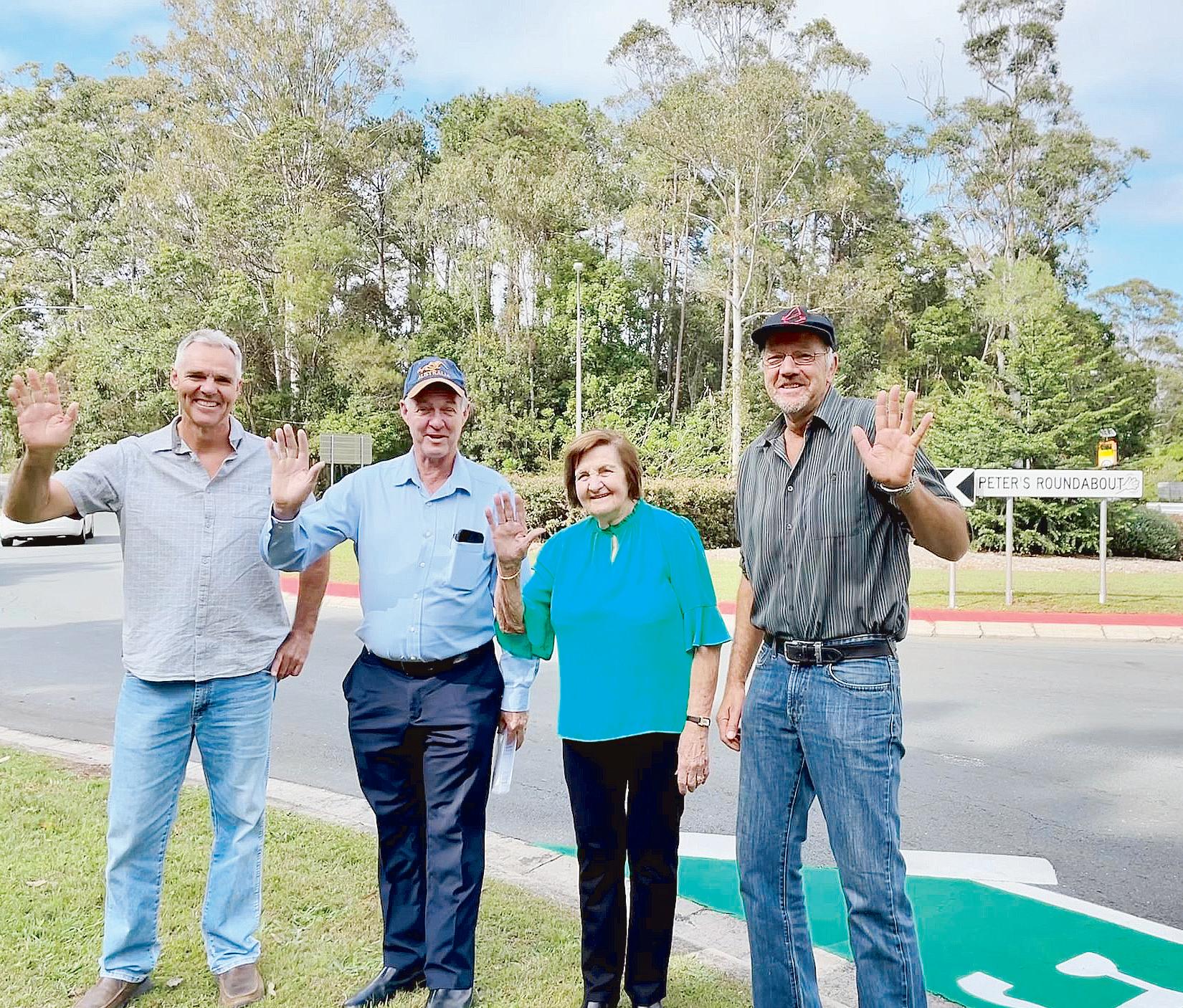

“Peter loved waving to all the children and commuters to start and finish their busy day and put a smile on his and everyone’s faces.

“This roundabout dedication is a tribute to him and a wonderful reflection of the Sunshine Coast and Buderim’s community spirit.
“Hopefully people will continue to wave to each other, in memory of the ‘waving man’.”
















It’s funny how the weather can seemingly respond to human situations.
Just last month a black cloud rolled across Laguna Bay and engulfed us in fog as we gathered to walk the beach in solemn remembrance of John Kerr, brutally murdered a week before.
Last week a similar fog rolled along the eastern beaches at dawn as rain threatened, but right on cue nature reversed itself, and shards of sunlight lit up a small crowd which had gathered at Peregian Beach to send 82-year-old Margaret Landbeck on her brave mission for social justice. A diminutive figure clad in black trackie pants and trainers, with “Yes” badges pinned to her shirt, Margaret was almost hidden from view by her circle of supporters, until handed a microphone so that she could explain the purpose of her four-day 82-kilometre walk along the Sunshine Coastal Pathway (a kilometre for ever year of her rich life so far). The crowd parted as she spoke.
“I’d like to acknowledge the traditional owners of the land on which I shall be walking and am privileged to be doing so, knowing that it has been tended for many thousands of years by the Kabi Kabi people. It’s a wonderful coastline when you consider it in the light of its history and culture, as well as the beauty of the spots we’ll walk through. I feel privileged to be making this small statement because I’ve always believed in the power of one, which is magnified today by the power of all of you who will go out and talk to people about the need for the yes vote.”
Among those who had gathered at Peregian to send Margaret on her way were Aboriginal leader and Noosa resident Noel Pearson, a director of Australians for Indigenous Constitutional Recognition, the organisation behind the Yes23 campaign, and Noosa deputy mayor and Voice supporter Frank Wilkie. Mr Pearson said: “The people of the Sunshine Coast live in the shadow of the ancient Aboriginal past, and the Kabi Kabi are still alive and well. Australians need to understand that all of this predates European colonisation, and if we acknowledge and recognise our Indigenous heritage we have a richer and bigger understanding of Australia. So I’m very pleased to join Margaret in starting her walk this morning and I’m sure I’ll keep up with her.”
Thanking Margaret for creating the opportunity to walk together towards reconciliation, Cr Wilkie said: “First Nations people have been walking this country for 60,000 years and this ref-



erendum is an invitation for us to walk forward together. It’s a wonderful offer, in fact it’s a gift, and many of us are going to embrace it with both arms and take it to our hearts.”
Filmmaker and musician Michael Butler filled the beachside park with the haunting sounds of the didgeridoo, and we were off, Margaret in the lead with Noel Pearson, in full sunlight now.
Margaret Landbeck grew up in a traditional establishment family in England, and later took up a nursing career, but soon after her marriage she and her husband accepted a university posting to Lesotho, a small African kingdom completely landlocked by the republic of South Africa, then under the strictures of the apartheid regime. They were to stay in Lesotho for six years. Says Margaret: “We went with one son and came back with four.”
When I joined Margaret again on day three of her walk, she said she was a little sore of leg and a bit tired, but I struggled to keep up as we walked the Bokarina Beach parkland. I asked her if her exposure to apartheid had awakened her strong sense of social justice. She answered thoughtfully: “When we went to Lesotho all those years ago and saw apartheid in practice I’d never been confronted by anything like that. From where we lived we had to go into South Africa for some of our major supplies, and going into those towns with their lovely parks, we were struck by benches that had whites only signs on them, and the buses were the same
until an old rundown one would come along that was for blacks only. It was all very shocking and I became aware for the very first time the plight of marginalised people. Those experiences certainly set me off on a pathway of social justice and in Australia I’ve been aware of our own Indigenous issues for many years, so when I heard about the referendum coming up I thought, well this is a no-brainer.”
The octogenarian resident of IRT Parklands Meridan Plains retirement community has not opted for a quiet life in her senior years. She is active in many social justice and community groups including refugee support through the Buddies network, and in publicising many social justice issues. She starts most days with a 10-kilometre brisk walk, so when she heard about former Liberal parliamentarian and ultra-marathoner Pat Farmer’s roundAustralia run for the Voice, an idea for her “no-brainer” started to form. The fact that Farmer had come from the side of politics that is officially against the Voice to Parliament was further inspiration.
Speaking at the finish line near Caloundra, her close friend retired accountant John Everall said: “Margaret suddenly announced she was going to walk from Peregian Beach to Bells Creek. I couldn’t believe it but I said, alright, I’ll help you. And it’s turned into the biggest exercise we could have imagined, months of training and planning. For Margaret it’s been a dual accomplishment – first to walk a kilometre for ev-
ery year of her life, and second to promote a conversation in the community about the Voice. I wasn’t particularly passionate about the cause, but with a background in tax and law, I was very interested in the constitutional side of it. I’ve worked in Aboriginal communities in my professional capacity and, in the end, I believe where we are going with this will be helpful to all, but it will take some time to work its way through the systems. I started out in this exercise simply supporting my friend, and by the end of it I’m feeling very comfortable about saying, vote yes in 2023. It’s the right thing to do.”
So the little old lady had won over the hard-working organiser to the cause. There’s a good start. The power of one.
But striding towards the finish, a glass of bubbly in hand and son Anthony at her side, Margaret was quick to point out that her efforts had already spread through the community, with television news coverage and interested people engaging with her at every pitstop. She said: “My motivation was to make a statement about the Voice and hopefully engage people in conversation and help them see another side of the story. That’s my hope from this walk. Just to start the conversation.”
Noel Pearson, at the finish to congratulate Margaret, commented: “I’m so inspired by Margaret. There’s a lot of cut-through in her advocacy as she speaks to people and explains the case for the yes vote. In fact she’s teaching me things about communicating.”


A popular coastal reserve that attracts thousands of people a day will be managed and enhanced to ensure it can cope with its soaring popularity following an August Sunshine Coast Council meeting.
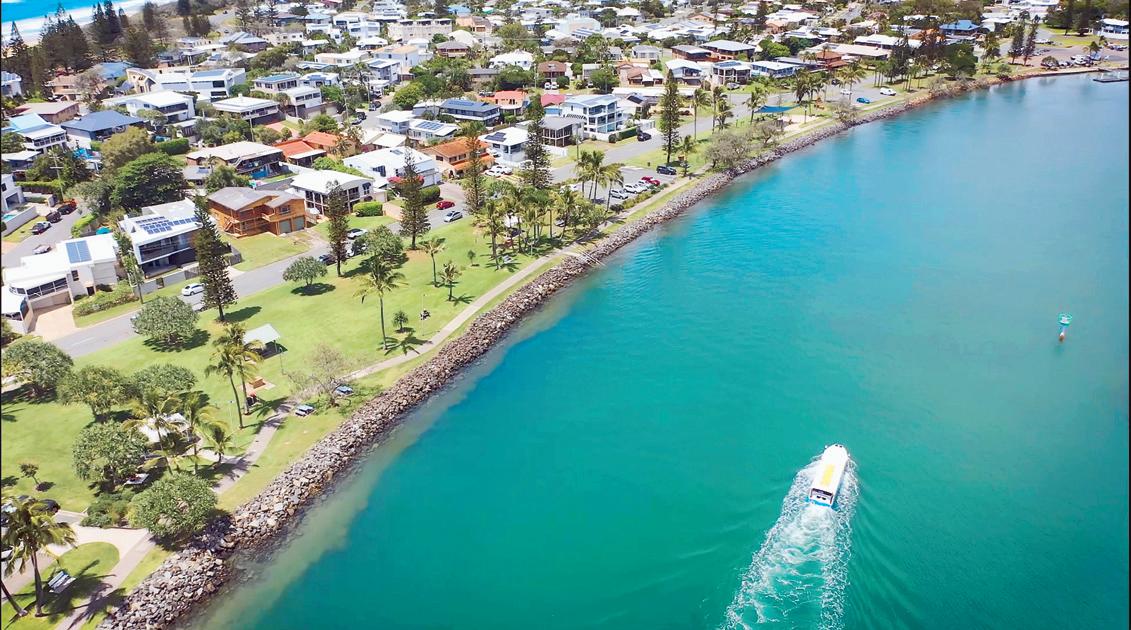
The Council endorsed the Point Cartwright Reserve and La Balsa Park Master Plan after working closely with the community and independent specialists.
They have endorsed a vision for the area, one they believe is much needed and will guide and shape it until 2041 and beyond.
Sunshine Coast Council Division 4 Councillor Joe Natoli said Point Cartwright Reserve and La Balsa Park were growing in popularity, which is why change was required.

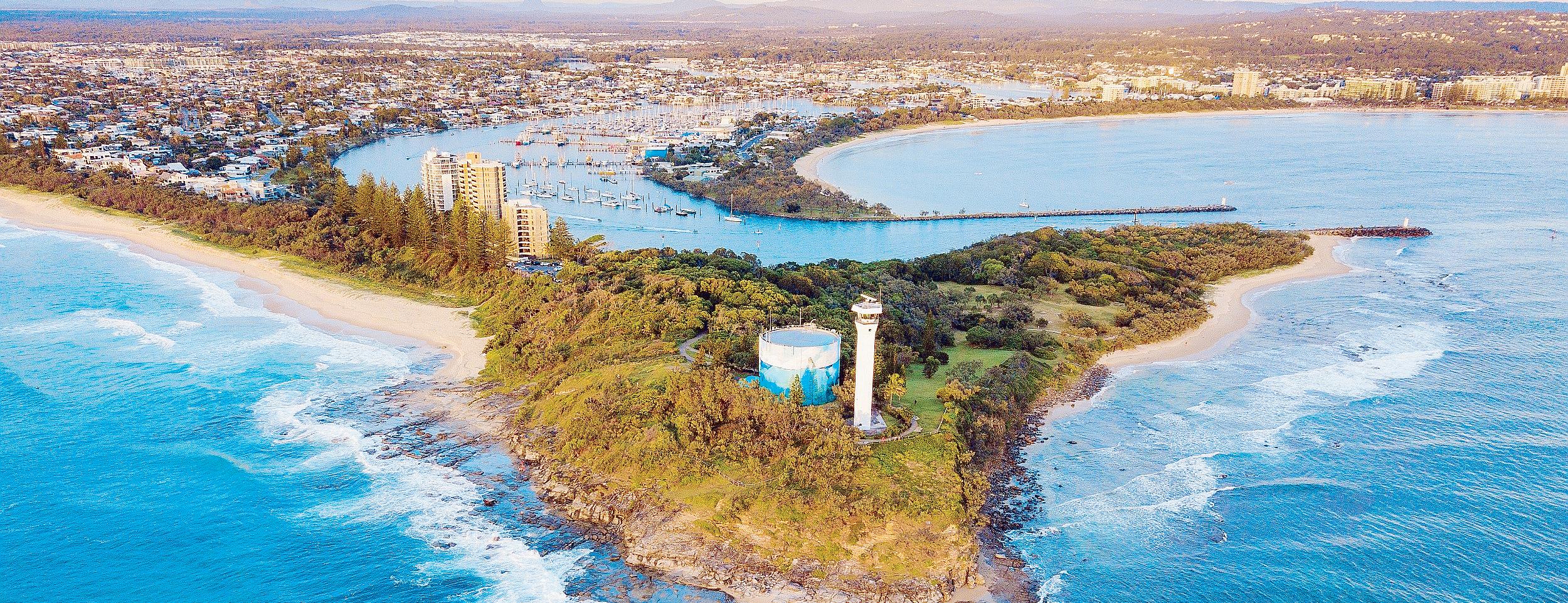

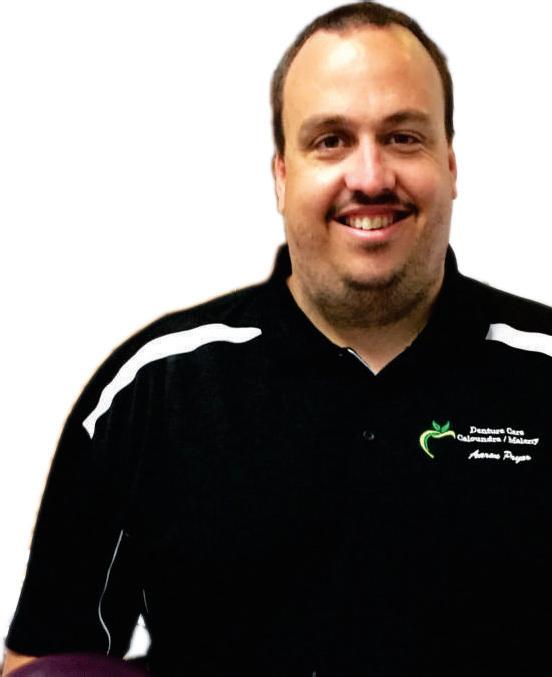
“We’ve learned so much since this project started – the Nudibranchs, the Littoral Rainforest, the shorebirds and the cultural heritage sites,” Cr Natoli said.
“It’s truly a unique and special place rich in values and it’s not surprising its popularity is growing.
“Our community through the Environment and Liveability Strategy as well as annual surveying constantly rate our natural environment as its highest priority.
“Council has an obligation to put best-practice management procedures in place to care and protect these values while improving the experience and accessibility of this beautiful place.
“This master plan is Council’s response to that, and I believe we’ve found the right balance in ensuring this is a site enjoyed for many future generations.
“I’m pleased to see my fellow councillors endorse this plan, which has been extensively shaped by community feedback since 2021.
“The majority of feedback showed most people want to preserve or enhance what they already appreciate rather than wanting infrastructure change in the area, and that’s exactly what this master plan contains.”
The plan outlines improvements to pathway networks, upgraded picnic furniture and playgrounds, more shade and landscaping, realigned parking, and viewing platforms.
The key features of the plan are:
· Enhanced community safety – ensuring a safer public realm for all to enjoy.
· Enhanced environmental protection – for areas of significant habitat and sites of significant cultural heritage value identified by our First Nations People.
· Enhanced accessibility and recreational opportunities – improved pathway network (wider paths, improved surfaces, improved alignment).
· Improved facilities – upgraded park furniture, equipment, improved barbeques and shelters.

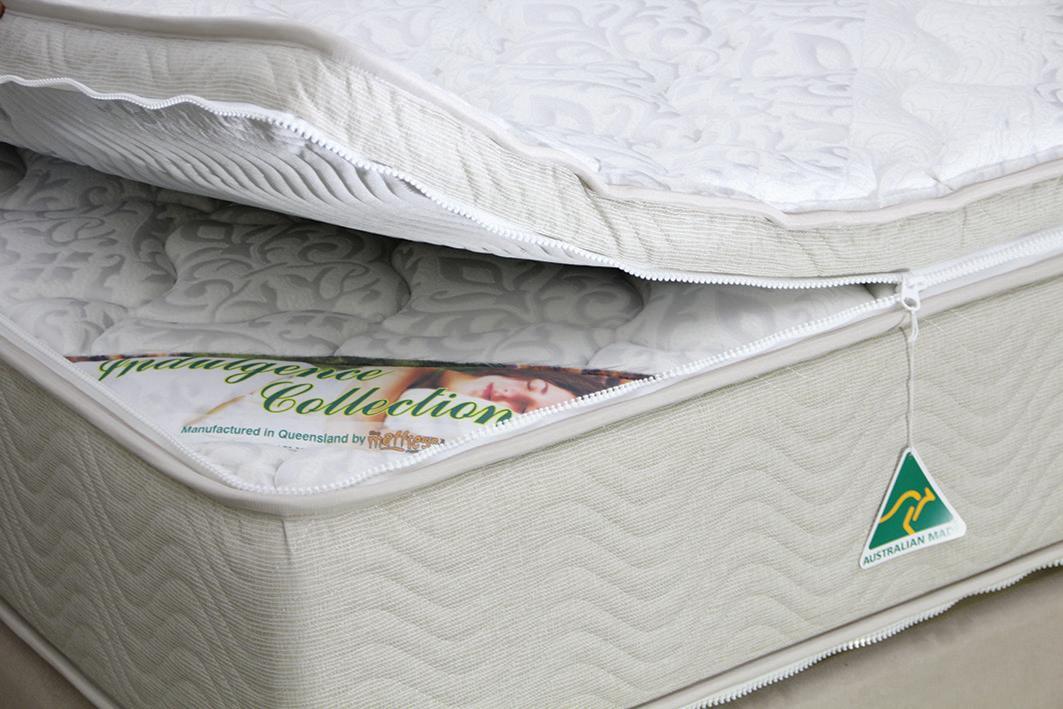


· More shade – for pathways, furniture, playground, picnic areas.
· Playground improvements – including interpretive/educational elements and increased play value.
· More interpretive and educational elements – for nature based passive recreation and cultural heritage appreciation
· Sustainable pet access – by retaining pet access in the reserve and park (on-leash) without time restrictions and prohibiting pet access to areas of the reserve and park of profound environmental significance. *Note these changes are subject to the local law amendment process and will be subject to a separate community engagement process later this year.
Two key actions and amendments from the community engagement between June and July 2023, showed strong support to remove the proposed dog offleash extension on the eastern beach due to significant turtle nesting habitat.
Council has also extended the dog on-leash access on the north facing path to ensure an accessible loop and path network.
In addition to this, the barge landing was relocated to mitigate impact on nudibranch habitat and a
popular diving site.
Cr Natoli said the plan had achieved a delicate balance between the needs of all user groups, recreational uses, and protecting the environment.
“For this reason, the master plan has provided recommendations to ensure sustainable pet access to ensure the protection of our environment,” Cr Natoli said.
“This was not a light decision and has been vigorously debated to ensure our community, our council staff and our environment are protected.
“The changes to pet access are subject to the local law amendment process and our community will be able to provide further feedback in a separate community engagement process later this year.”
For more information about the master plan, please visit council’s website. For a full list of engagement activities and amendments please visit Council’s Have Your Say website.
Tucker, a curious Kelpie cross from Yaroomba Beach, escaped while his owner Carinne was out. As soon as she arrived home, she knew he was gone.

“The usual jingle of his tags was conspicuously absent. I dashed around the yard calling his name in a panic, it was then I saw he had done a little doggie excavation and snuck out under our deck.
“You always think the worst with so many busy roads around.
“Not long after, I was so relieved when I got a call from a supervisor at the pound. A kind community member called in to say they had found him. It was easy to identify Tucker because he had his blue Sunshine Coast Council registration tag on,” Carinne said.
There is a misconception that a microchip is the key to identifying a lost pet, Tucker’s escape demonstrates how quickly your furry friend can be identified over the phone with their council registration number.
The annual Sunshine Coast pet registration period is coming up in Septem-
ber, so now is the perfect time to make sure your pet’s details are up to date. If you have moved to a new house,
your pet has been recently desexed or microchipped or your pet has sadly passed away, it’s important to ensure
that council has the correct registration details. Registration costs just $26 if your dog or cat is desexed and it’s free if you have a current pensioner card for a desexed and microchipped animal. Service Excellence Portfolio Councillor Winston Johnston said pet registration was a key part of being a responsible pet owner.
“Making sure your pet is registered and microchipped, and its details are up to date, helps council get your pet back home quickly if they roam from your property,” Cr Johnston said.
“There are more than 60,000 pets registered in the Sunshine Coast Council region and the registration information also helps us to provide pet-related services where they are needed most.”
Update or cancel a pet’s registration details via the simple online form on council’s website by searching ‘cat and dog registration’. Pets can also be registered with MyCouncil to update any of the following animal details: pensioner details, desexing microchipping, status of your animal and request a replacement tag.
Get ready to socially connect this October as Queensland Month Seniors Month, 1 - 31 October, returns for another year.
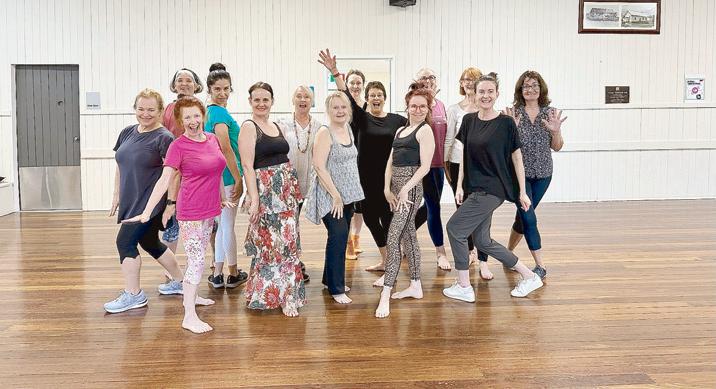
Beginning on the United Nations International Day of Older Persons (1 October) and including the celebration of National Grandparents Day on Sunday 29 October 2023.
Reinforced by the continued theme of ‘Social Connections’, Seniors Month aims to increase the social connectedness of communities throughout Queensland. Simply put, it’s going to be a Connect Fest!
“There is no denying the importance of feeling socially connected “said Lisa Hodgkinson, Senior Project Officer at Council on the Ageing Queensland.


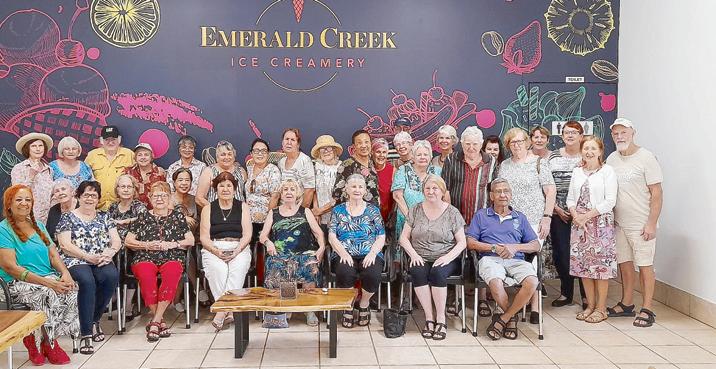
“Social connectedness is one of the most important factors in creating strong and resilient communities. It allows us to build relationships with people we might not otherwise meet, share common values and experiences, and can help us to become more aware and engaged.
To enable this, we need caring supportive communities that foster and support social connections through spaces, places, and activities. It’s part of what makes Queensland Seniors Month so special.”
Seniors Month provides the opportunities for people to connect through inclusive events and activities held throughout the month.
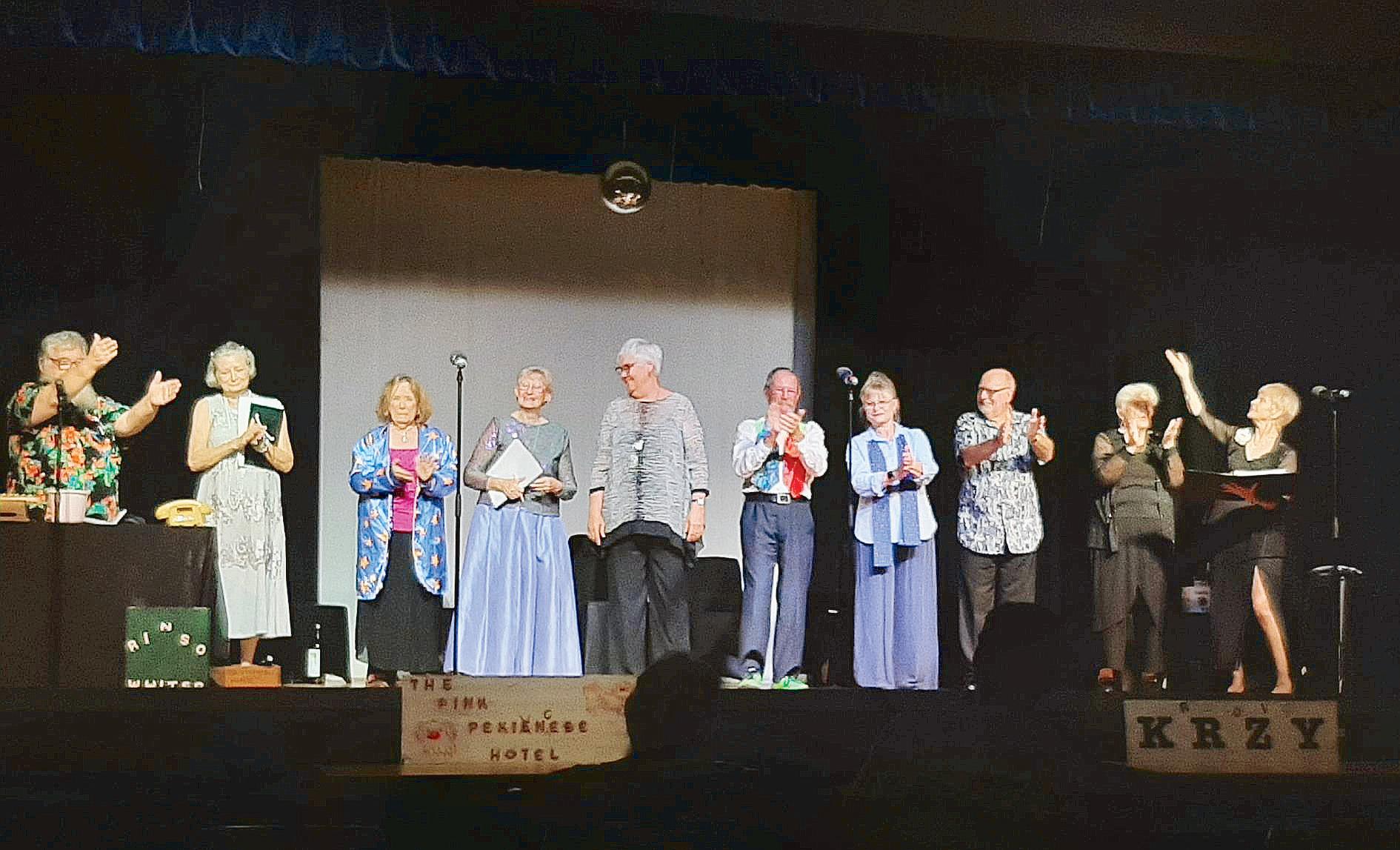
Event organisers are in full swing, planning and organising what is shaping up to the best year yet.
From fitness classes, art and craft workshops, technology courses, social events, concerts, excursions, expos a so much more, there will be a wide variety of events and activities on offer.
If you’re planning Seniors Month activities, we urged to let the community know what’s on offer by submit-
ting their events and activities into the online event calendar.
For more information and to submit your events visit www.qldseniorsmonth.org.au.
Happening in our area
· Seniors Week Garden High Tea
· 17 October
· 11:30 am – 2:30 pm
· FREE
Coolum Beach Meals on Wheels clients are invited to attend our Centre to enjoy a Garden High Tea. The event is run as if you were attending a High Tea at a hotel venue – the high tea is served
using fine china and clients are waited on by our volunteers. Our volunteers mingle with the clients to ensure everyone is included and made to feel welcome.
Coolum Beach Meals On Wheels
· 17 Santa Monica Avenue, Coolum Beach
· Heart of Gold International Short Film Festival
· 6 – 8 October
· $18
Every year Gympie comes alive with film lovers from far and wide to celebrate short films that are uplifting, heartwarming and inspirational dur-
ing Queensland’s biggest short film festival, Heart of Gold International Short Film Festival.
For three fun-filled days, your hearts will be warmed with our curated film screenings, your bellies will be sore with laughter from the comedy, and your toes will be tapping to the beat of irresistibly good live music, all the while you fill yourself up of mouthwateringly good food, beer and wine.
Gympie Pavilion
· The Pavilion Conference & Reception, Gympie Showgrounds, 77 Exhibition Rd
· Gympie
For those who enjoy the hospitality at the community owned Boronia Cottage on Bribie Island, the cottage is more than a respite facility.
With its spacious living areas and light and airy bedrooms with all-ability ensuite bathrooms, it is the staff that truly makes it ‘Home away from home’.
“If I can make a client smile and laugh and make their day better, I have bought sunshine to someone who needs it,” says Boronia Cottage Manager, Nikki.
The mum of two has worked in the Health and Aged Care sectors for over 28 years. ‘Work fills a large part of your life; to be great at what you do, you must love what you do. And I love being part of the team at the Cottage.”
Her crew of support workers are equally dedicated. Marcelle, who made Queensland her home in 2000, is passionate about her customers, especially those with dementia. “There is still joy to be had if dementia is in your life,” says Marcelle.
Leanne recently celebrated 10 years with Suncare. The quote she lives by is “Never judge… just be kind to everybody” and this she does every day. Leanne enjoys providing guidance and support to the newer and younger staff.
Bribie Island is a naturally beautiful location surrounded by pristine coastline. And it is home for Danielle. “The fact that I come to work each day and
feel like I have walked in the front door of home is something I am so grateful for. The clients become part of your extended family and the fact that I am lucky enough to spend quality time getting to know them is very special to me.”
The youngest in the team is Emily. “Connecting with our customers is really rewarding and I am learning so

much about the Aged Care sector.” And Bribie Island is perfect for her love of water sports too!
With such a dedicated team, who all love what they do and start each day wanting to make a difference in their customers’ lives, it is clear to see why Boronia Cottage is fondly known by all
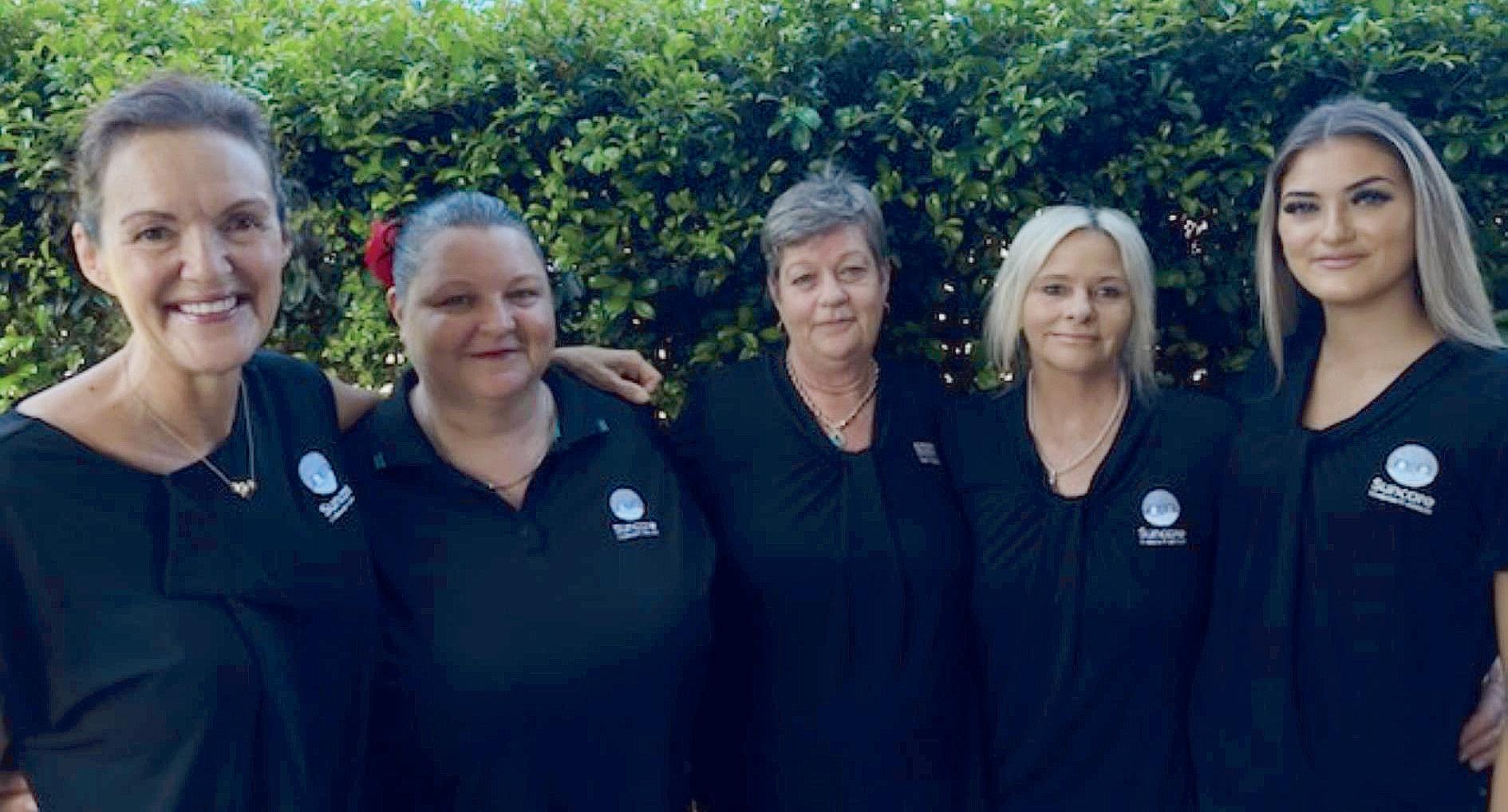
who visit it as ‘home away from home’. The Cottage is owned by the BribieMoreton Hospice Health Services Inc and is supported by the wonderful community of Bribie Island.
For more information Boronia Cottage, please contact Suncare on 1800 786 227
The Sunshine Coast is a step closer to having a much-needed new regional gallery, thanks to a transformational creative arts and cultural project taking place in a popular beach side suburb.
Sunshine Coast Council unanimously endorsed the detailed business case for a new Sunshine Coast Regional Gallery in Caloundra at the Ordinary Meeting, 24 August.
The business case will now be used as the foundation document to develop a funding strategy and advance conceptual designs this financial year.
Sunshine Coast Council Division Two Councillor Terry Landsberg said the new regional gallery was a key component of the vision for the Caloundra Community and Creative Hub precinct and would be an important cultural facility for the whole Sunshine Coast region.
“The benefits of investment in the new gallery are considerable in terms of generating economic activity in Caloundra and the wider Sunshine Coast region, increasing cultural awareness, improving sense of place and enhancing community development through increased liveability and public amenity,” Cr Landsberg said.
“A comparative and integrated analysis of the shortlisted options considered throughout the business case determined that the preferred location for the new regional gallery is the existing library site.
“This option uses part of that site, enabling us to preserve Felicity Park with the potential to create a significant town square and expanded open and public space.
“The revised location provides optimum pedestrian and visual connections throughout the precinct, protects existing vegetation and focuses backof-house and loading functions away from open spaces, minimising impacts on the public realm and proposed new town square.

“It also allows the continued opera-
tion of the current gallery throughout a construction period and retains land capacity for potential collocated mixed-use development in the future.
“We acknowledge there are many competing funding priorities so it’s important to note council has only endorsed the business case and the location of the new gallery at this stage.
“The business case will guide future planning and design of the new gallery and acknowledges the potential sources of future funding support the project will need from other levels of government or through philanthropists.
“With current council funding secured only to progress further planning and conceptual design, other significant external funding will be essential to deliver the facility in the future. Having the project shovel ready will put us in a good place to seek future grant funding.”
Cr Landsberg said the business case and creative hub highlighted the regional importance and benefits of investing in the arts.
“There is significant potential and opportunity to revitalise and increase capability and reach of the arts sector on the Sunshine Coast while creating sustainable and resilient cultural infra-
structure,” Cr Landsberg said.
“As well-loved as the current 23-yearold gallery is, the facility faces increasing challenges in terms of attracting and hosting exhibitions and tours, generating commercial opportunities and sustainable revenues, plus stimulating and supporting economic development and growth in the region.
“The proposed new gallery will address these shortcomings and provide a massive boost to the cultural experiences offered in the region.
“The business case will guide future planning and design of the new gallery and acknowledges the potential sources of future funding support the project will need from other levels of government or through philanthropists.
“With council funding secured only to progress further planning and conceptual design, other significant external funding will be essential to deliver the facility in the future.”
Community Portfolio Councillor Rick Baberowski said the business case approval was an important first step to deliver on the Regional Arts Infrastructure Framework 2019–2041, which responds to the needs of our community by providing a network of transformational arts infrastructure across our region.
“Approving the business case places us in a much better position to prepare a funding strategy to guide approaches to potential funding partners including state and federal governments and philanthropists,” Cr Baberowski said.
“Until we have certainty on cost and funding there will be a need to stay somewhat flexible in the detailed design of the proposed gallery.
“Obtaining the funding will allow us to achieve the functional and design outcomes required to ultimately position our region as a nationally competitive cultural destination.”
The development of the new Regional Gallery occurs within the context of the Caloundra Centre Master Plan,
Caloundra Centre Activation Project and the Community and Creative Hub Precinct and is a deliverable of the Sunshine Coast Creative Arts Plan 2023 –2038 and Regional Arts Infrastructure Framework 2019-2041.
To read more about the detailed business case, visit council’s website and search for “Caloundra Centre Activation Project”.
FAST FACTS: Caloundra projects benefiting our community
New Caloundra district library and community space:
· The three-storey building will include a contemporary district library, a customer service centre and community spaces and council administration and councillor offices.
· The refurbishment of the building is expected to start in the coming months, with completion scheduled for 2025.
· Upon completion approximately 150 staff will work in the new state-of-the art building
Caloundra Transport Corridor Upgrade:
· New transport corridor to improve connectivity and travel choice into Caloundra CBD
· The 1.6 km road upgrade and new extension is being delivered between Omrah Avenue and Nicklin Way, Caloundra
· The upgrade encourages active and sustainable transport, including walking, cycling, electric vehicles and public transport.
Caloundra Community and Creative Hub:
· Improved open space for people to enjoy and discover arts, creativity and community.
· Extended shady and green landscaping to cool and create a welcoming space.
· A place which connects spaces and civic buildings with accessible events.
The Buderim Foundation Thompson Charitable Fund has thrown its support behind SunnyKids, a group which supports vulnerable Sunshine Coast families.
The foundation chair Rod McKinnon has provided a $65,800 grant to help SunnyKids continue their work providing vital support for Sunshine Coast families in need of a helping hand on the Sunshine Coast.
“The Buderim Foundation’s Thompson Charitable Fund is proud to support SunnyKids and the work they do in providing emergency food, accommodation and other support,” Rod McKinnon said.

SunnyKids CEO Kathleen Hope said SunnyKids provides connections and support for vulnerable Sunshine Coast families focusing on providing complex case management, including long-term capacity-building and emotional support.
“We seek to assist families and individuals in some of the worst situations imaginable. Families arrive at
SunnyKids hoping to access clothing, medicine, food or things like car registration which in turn allows them to focus less on transportation and more time on other vital family needs like getting the kids to school, doctors’ appointments, and getting to and from work,” Ms Hope said.
“This grant from the Buderim Foundation’s Thompson Charitable Fund is fantastic and will allow us to provide more immediate relief to alleviate economic and housing stresses experienced by our clients.
“Last year, SunnyKids experienced more requests for support than ever before. We were able to help almost 2500 vulnerable individuals within families.
“Unfortunately, our waiting list continues to grow. These funds allow us to provide support to even more families in our pursuit to end hardship right here on the Sunshine Coast,” Ms Hope added.
The Buderim Foundation has been the Trustee for the Thompson Charitable Fund since April 2021.
Over the past two years, a rolling grants program has provided over $460,000 to support people experiencing homelessness and financial distress on the Sunshine Coast.
The Buderim Foundation is a philanthropic organisation which harnesses the power of giving by generating income from donations and bequests and providing grants for worthwhile community projects.
In addition to the Thompson Charitable Fund, the Buderim Foundation runs a separate community grants program supporting projects benefiting the local Buderim area.
To find out more about the Buderim Foundation Thompson Charitable Fund visit buderimfoundation.org. au/grants/the-buderim-foundationthompson-fund/
For more information about SunnyKids, visit sunnykids.org.au/ and for more information about the Buderim Foundation visit buderimfoundation. org.au
With sold out performances both in Australia and New Zealand, one of Australia’s brightest and internationally acclaimed singer/songwriters, Bloom, celebrates the hits of Adele with her effortless and soulful vocal resonance of the English singer.


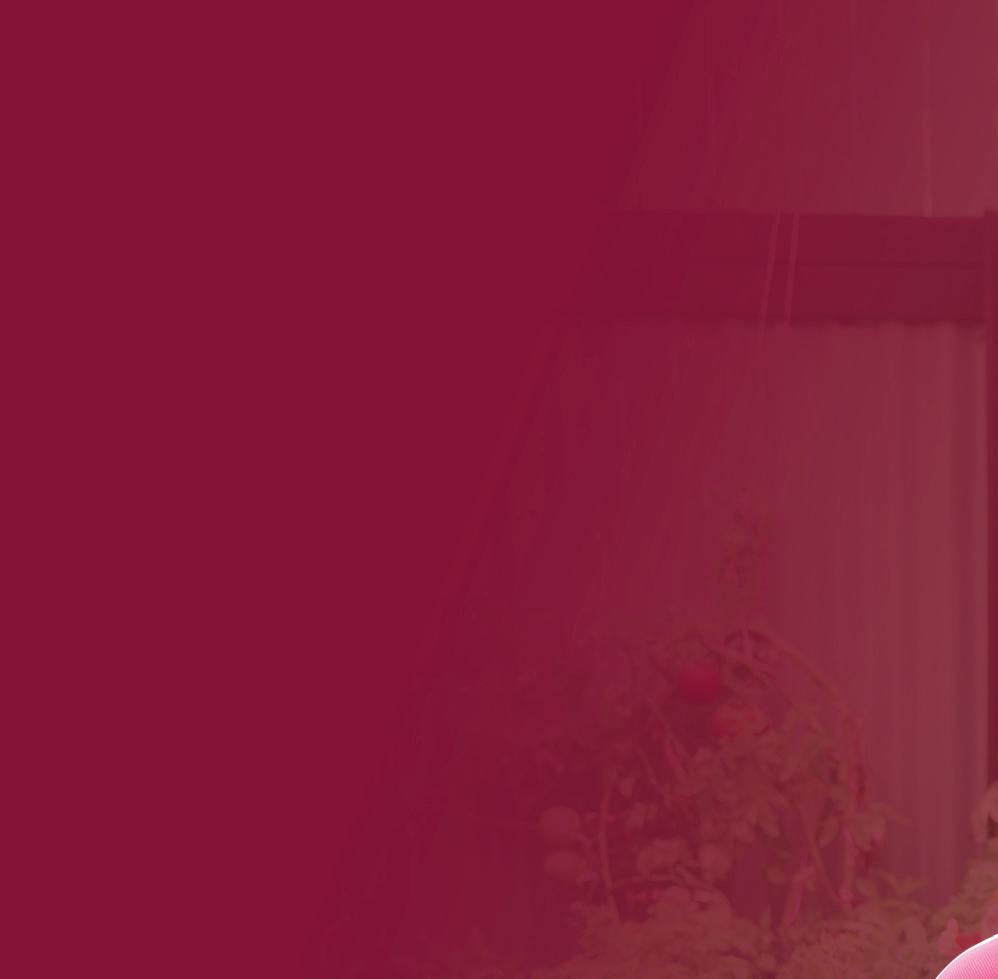
She is coming to The J to perform the music from the powerhouse album that was 2011’s 21 in full, plus some other great hits from Adele’s catalogue.

Bloom will perform with her sevenpiece band, featuring past and present

band members of Human Nature, Jon English, James Reyne, and 1927.
With an impressive 31 million album sales, 21 was Adele’s much celebrated second studio album that yielded five singles and became the world’s bestselling album of the 21st century.
The album was certified 17-times platinum in the UK, and Diamond in the US.
In Australia, Adele’s 21 spent 32 weeks at number one on the Australian ARIA Top 50 Albums Chart, 10 of which

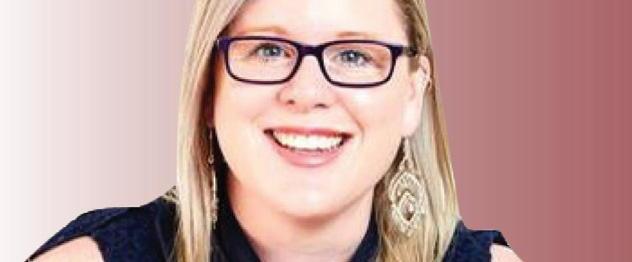
were consecutive, and amassed over one million sales.

It was the second longest running number one ARIA chart album in ARIA Charts history.
Bloom is a sublime performer and brings to the stage a professionalism that has been described as “stunning”, “mesmerising” and “captivating”, even being labelled by some of Australia’s leading music stars as a “singer of our generation”.

As described by Scenestr Magazine,
Bloom “crafts personable moments onstage that resonate with audiences.”


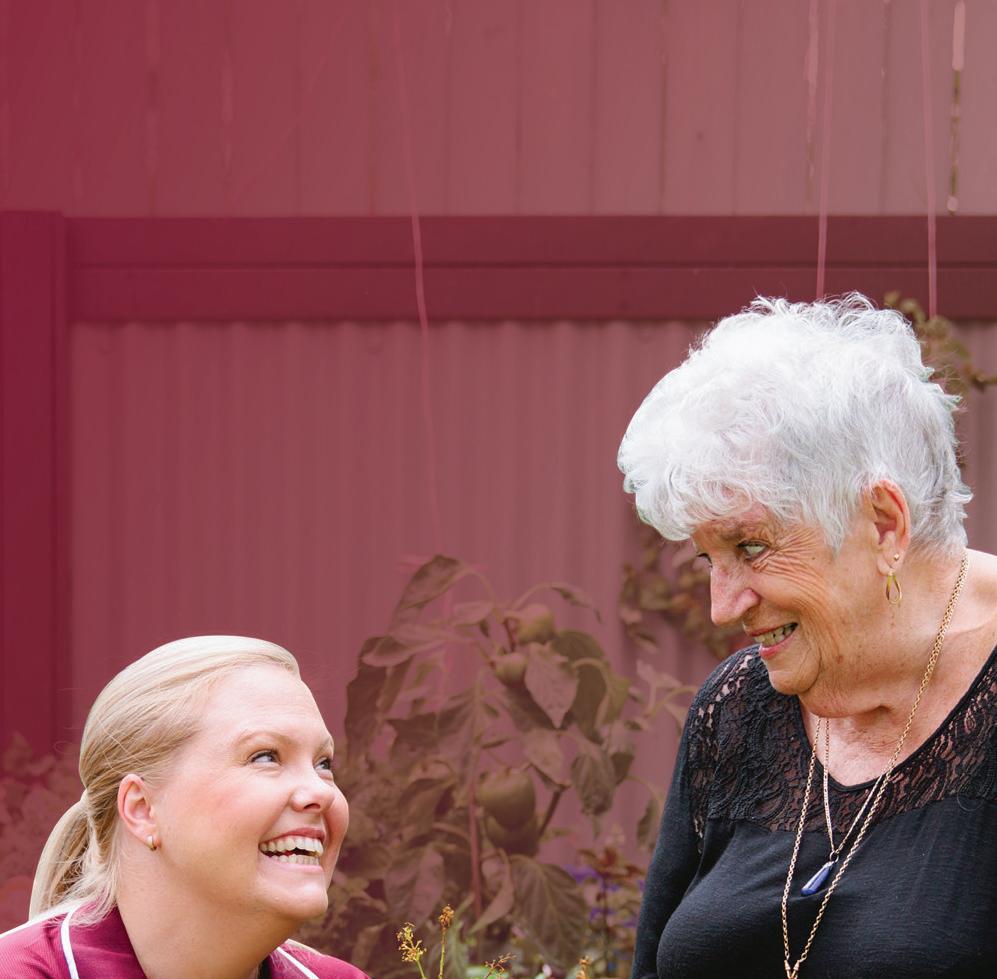
In this concert production, you can hear the fan-favourites: “Rolling in the Deep”, “Someone Like You”, “Rumour Has It”, “Turning Tables”, “Set Fire to the Rain”, “Send My Love”, and many more. Come and be charmed by the Australian vocal powerhouse that is Bloom and celebrate all that is Adele.
Saturday 11 November, 2023: The J – Noosa, QLD thej.com.au | (07) 5329 6560
They may be in their 70s now but Agro (arguably Australia’s most iconic puppet though a certain Ostrich or Man from the Moon might argue) and “the bald man under the table” Jamie Dunn are still partial to getting out and doing gigs.


“Where there’s a till there’s a way,” Agro laughed as we sat down for our phone interview about his shows at the Redland Performing Arts Centre in September. Yes, I interviewed a puppet, you do a lot of weird stuff in this job and this isn’t even the weirdest – and it’s Agro who wouldn’t want to interview the naughty puppet that could (and often did).
The show is hosted by another iconic Children’s television presenter, Ranger Stacey and is a stroll down memory lane and a chance to hear the naughtiest and funniest Aussie Showbiz stories behind the accidental puppet that became an Aussie icon (and scarily influenced a whole generation).
It will take you back more than 40 years to a time when Mt Cootha was a hive of televisual activity and Agro, Dunn and Jill were the kings and queen of Saturday morning cartoons before they moved into radio and conquered that medium too.
It’s a chance for Agro to get out of the bag in Jamie Dunn’s boot and make people laugh – something he’s still pretty good at.
“Yes yes I’m heading down to Redlands for a show I’ve never been to the Performing Arts Centre there but I’m looking forward to it,” Agro tells me.
“I will take you back in time, time, time – it’s a behind the scenes look at how I got started in this industry – rags to riches.
“But you’re still rags though right?” I quip.
“Yeah, exactly and I’m working with Ranger Stacey – now there’s a blast from the past.”
I derail the conversation, and mention that I’m good friends with his old partner in crime Jill, who might be the first thought when you think of a host for this gig. He laughs.
“I got offered to do a job in Mackay recently and because they wanted to look at that time, so I thought I’d send Jill a message, would you want to do a show,” he says.
“She sent me back - I’m a grandmother, I’ve got a good work life balance and not changing it.”
I laugh that sounds like the woman I met when she was asked to do a column for the paper I was working at.
“I met her in Toowoomba when she was working with a puppet called Ebeneezer the Dragon,” Agro explains.
“I remembered that and when I needed a cohost I told Channel Seven there was a girl up there who’d be great to work with but they made me audition with about six other people Tiffany Lamb and different ladies like that but I didn’t work very well with anyone but Jill – on purpose,” he adds in a cheeky conspiratorial voice, laughing uproariously.
“It will be hoot working with Ranger Stacey. She is exactly the same as Jill.
For instance, this isn’t a kids show by any means, but back in the day I remember when a kid would say to Jill for instance – I’ve got a new bike. These days people would just say that’s good and walk on but Jill would stop and say and ask what colour is it? She just had a niceness about it and Ranger Stacey is exactly the same as that.”
And just like Agro (and the man under the desk) Stacey has been a huge part of the childhoods of those who grew up in the 80s and 90s.
“I may never be in children’s television again because of all the out-takes of Cartoon Connections that have gone around the world. They’ve had four and a half million hits from when I was a bit naughty at work,” he chuckles. The one of him working as a naked hand after a
dog stole his puppet self seems to pop up more than any other.
“I can’t do that any more,” he says. “Mr Dunn can get down to get under the desk but he just can’t get back up again. And I’m sure seniors will understand that.”
Agro says the show will have a bit of everything.
“There’s a behind the scenes video from the past, there’s an interview with Ranger Stacey and I’m looking forward to that because Mr Dunn comes out and he’s known to be just a little cutting,” he says.
“The show is planned, but not planned……if you know what I mean. That was always the reason that Agro was so successful because it could go off to the right at the drop of the hat.”
Kids know when things are scripted so freewheeling a little is a good thing but particularly when something is live, there is a bit of an air of danger.
“Oh, yeah that’s my middle name,” he says in a sly voice.
“I am looking forward to Redlands and we have one in Ipswich as well on 22nd – a week before Redlands, it will be lovely, I’m looking forward to it, I really am.”
Does he get out much these days?
“Wherever there’s a till there’s a way,” he laughs and I don’t think I’m talking to Agro anymore.
“I don’t feel like retiring, I slowed down just a little bit but no, no not retiring. I was thinking about it because I’m 74 this month. I was thinking, what I would put on my headstone if something went wrong and that’s probably a reason to come to the show – come and watch me die on stage - at least I’ll be in a box already -. I was thinking I would put on my headstone “what a cracker of a life, I’ve had a beauty.”
VIP ticket holders will get a copy of Jamie Dunn’s autobiography and get a chance to meet the gang.
The meet and greet will take place immediately after the performance where guests will also be given an autographed book.
At the end of the show, all VIP ticket holders are asked to remain in their seat whilst the rest of the audience clears (and Agro suggests it’s worth the price of admission to watch the guy employed to help Mr Dunn up out of the box after the performance).
Each group will then be invited for a polaroid photo opportunity with Jamie Dunn and Agro. This will be provided to you on the night at no extra charge.
· FRIDAY SEPTEMBER 29, 2023: REDLAND PERFORMING ARTS CENTRE
– CLEVELAND
· BOOKINGS: www.rpac.com.au or phone venue box office: (07) 3829 8131
With almost one in five Australians living with a disability, Spinal Life Australia and Cerge are thrilled to announce their implementation of the groundbreaking Access Accelerator program, designed to transform tourism destinations across Queensland into inclusive and accessible havens for all travellers.
Through their successful application for the Queensland Government’s Accessible Tourism Enablers Grant under the Year of Accessible Tourism in Queensland, Spinal Life and Cerge’s Access Accelerator program is set to revolutionise the tourism industry, starting with the Sunshine Coast region, by making tourism more accessible, inclusive, and welcoming to travellers with diverse accessibility needs.
The program aims to empower businesses and equip them with the knowledge, tools and confidence to create accessible tourism destinations through immersive disability awareness training, adoption of award-
· 1.3 million Australians represent the accessible tourism sector for overnight and/or day trip travel


· According to the ABS*, one of the

winning inclusive technology, guided access and inclusion planning, and real-life stories of inclusion experienced by customers.
Visit Sunshine Coast CEO, Matt Stoeckel, expressed his full support for the Access Accelerator program and its intended delivery in the region.
“As a destination we know it’s important to be more inclusive and this is a step in the right direction. The Access Accelerator program will give tourism operators on the Sunshine Coast the tools to better cater to the accessible tourism market.
The program will enable the participating tourism operators to better understand the accessible tourism market and improve the experience for those travelling with a disability. We are eager to work closely with Spinal Life Australia and Cerge to ensure our local tourism operators embrace accessibility and create memorable experiences for every visitor.”
Chris Kerrisk, the co-founder of
Cerge, also put forward his support for partnering with Spinal Life in the successful delivery of this program.
“We are proud to be partnering with Spinal Life Australia to deliver this transformative program,” says Mr Kerrisk.
“Through the Access Accelerator, businesses will not only enhance their services for customers with disability but also gain a competitive edge in the growing accessible tourism market.”
The Access Accelerator program is slated to kick off in October 2023, with a series of industry-leading workshops and training sessions for participating tourism organisations to gain firsthand insight into what it may be like to have a disability.
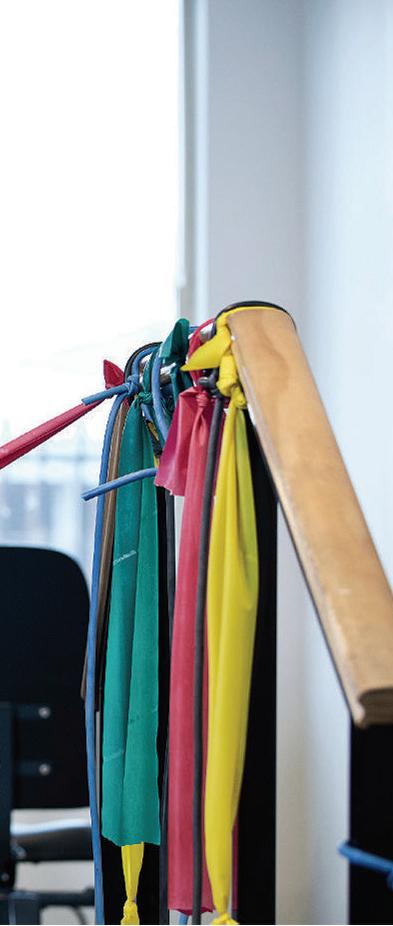

These workshops will be spread across multiple delivery dates to accommodate business operations and staff turnover, ensuring maximum participation and impact.
Dane Cross, senior advisor – Access and Advocacy of Spinal Life Australia,
is thrilled to be part of this next step in championing accessibility within tourism.
“We are delighted to receive the Accessible Tourism Enablers Grant, as it reaffirms our commitment to making Queensland a leader in accessible tourism.
“This funding will enable us to roll out the Access Accelerator program to a diverse group of 50 tourism operators, including those on the Sunshine Coast. Our aim is to create inclusive destinations that set a benchmark for accessibility in Australia,” says Mr Cross.
Spinal Life Australia and Cerge thanked the Queensland Government for recognising the importance of accessible tourism and supporting this scalable and transformative initiative.
They said the funding success underscored the collective commitment to building a more inclusive and accessible Queensland.
greatest sources of disability discrimination comes from service and hospitality staff – the Access. Accelerator program aims to remove this

as a barrier to inclusion in the tourism industry.
· Spinal Life Australia and Cerge’s new program combines immersive





disability awareness training and award-winning inclusive.. Technology to offer an extraordinary and accessible experience to all visitors.

A 79-year-old Redlands woman who suffered debilitating knee pain for 15 years is back on her feet after undergoing life-changing robotic knee replacement surgery at Mater Private Hospital Redlands.
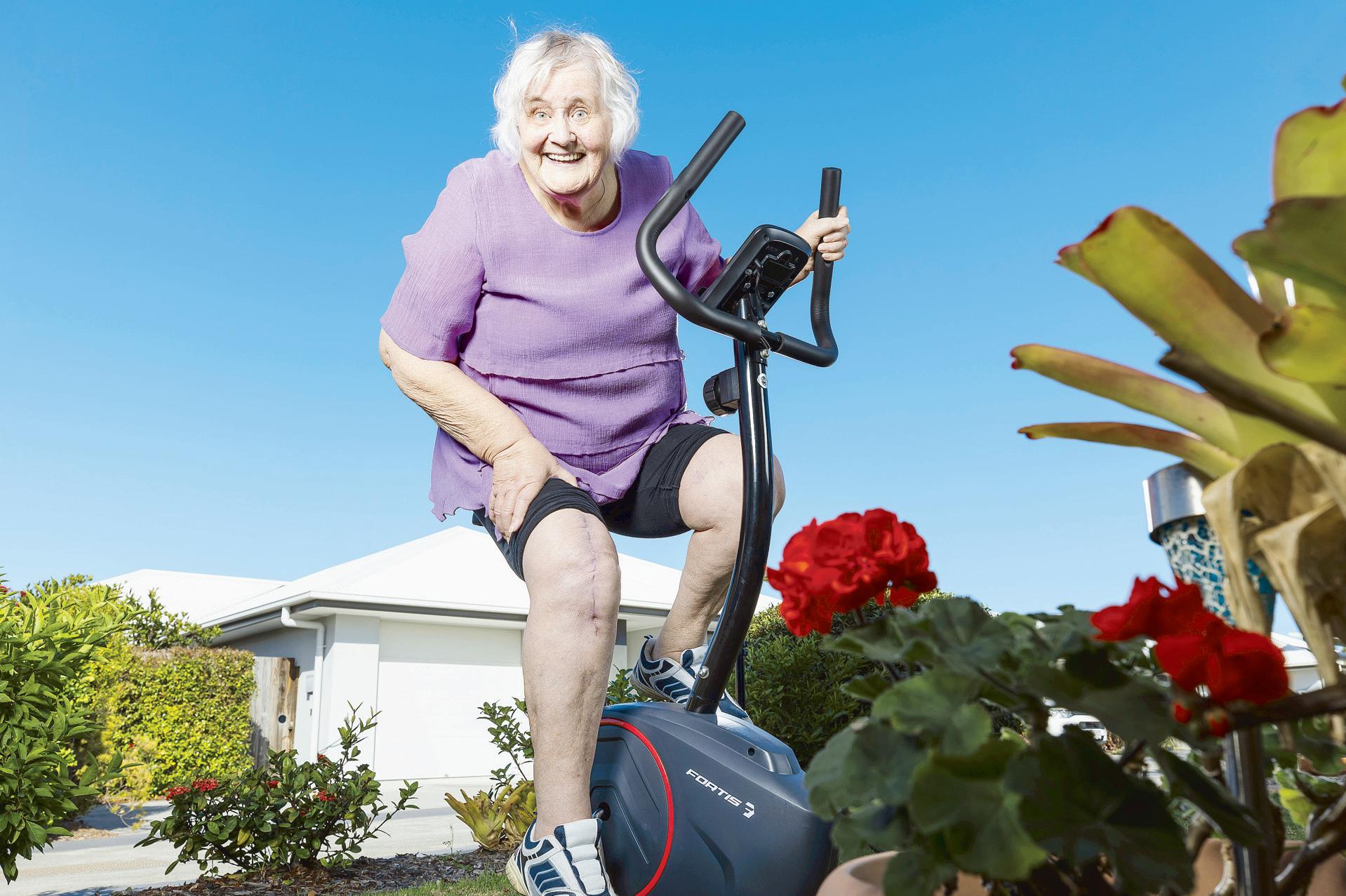
Wellington Point’s Shirley Teua was the first person to have a knee replaced using the hospital’s new ROSA Robot (Robotic Surgical Assistant).
For the past 15 years Ms Teua endured severe knee pain after tearing her meniscus (a piece of cartilage in her knee), which left her in constant discomfort and unable to stand.
Mater Private Hospital Redland Orthopaedic Surgeon Dr David Ramsay performed the surgery and said the hospital was the first in the area to offer the cutting-edge robotic technology. He said the robot helped surgeons plan and perform personalised and

highly precise cuts to bone, ensuring implants can be better fitted according to a patient’s individual anatomy.
Dr Ramsay said the technique achieved faster recovery times, less pain and a more ‘natural’ feel in the knee join – with patients typically back on their feet within days.
“The robot is an assistive technology for patients, usually in their 50s to 70s, requiring knee replacement surgery,” Dr Ramsay said.
“The surgeon still does the procedure, but it allows us to do much more controlled and subtle balancing of the ligaments and tendons around the knee during the surgery than what the previous system could do.
“Using the robot helps make the new replacement feel more like a natural knee. This robot can also give us information about what the soft tis-
sue is doing.”
Ms Teua said since her surgery in May, she had recovered well and was now able to drive her car, use her sewing machine and walk around the supermarket unaided.
“Life before the operation was hard,” Ms Teua said.
“My right knee developed arthritis, it was bone on bone, which led to getting the knee replacement.
“It would take me about three minutes to stand up, it was horrible. This surgery has been life-changing and I am in absolutely no more pain.
“My recovery was so good that I was up walking a day after surgery – I wasn’t expecting that at all.”
ROSA is a robotic surgical assistance tool developed by US-based manufacturer Zimmer Biomet, which provides surgeons with enhanced precision be-
fore, during and after knee replacement procedures.
Dr Ramsay said it was exciting to have the new technology at Mater Private Hospital Redland.
“The fact that patients don’t have to travel outside of the Redlands to have this procedure done is exciting,” he said.
“With ROSA’s assistance, surgeons can more accurately plan pathways for patients who present with unusual cases and those with higher risk or more difficult surgeries.
Dr Ramsay said the benefits for Mater patients had been evident, from preoperative care and planning through to surgery, rehabilitation and follow-ups.
The ROSA robot is also used at Mater Private Hospital Springfield, Mater Private Hospital South Brisbane and Mater Private Hospital Townsville.
New research from nbn reveals connected Queenslanders want technologies that can help keep households physically safe (47 per cent), enable elderly relatives to live independently for longer (35 per cent) and help protect households during natural disaster events (33 per cent) in their homes 10 years from now. One third of respondents (33 per cent) also want more remote health and wellbeing support delivered from home in the future.
With data use on the nbn® network tripling in the past six years, nbn commissioned the Home of the future study to learn more about how Australians are using technologies in their homes today, how technology will play a role in homes a decade from now and understand Australia’s appetite for immersive technologies.
Using connected technologies such as security cameras, motion sensors, smart locks and kids GPS trackers to

keep households physically safe was the clear winner across every state and territory except the NT, Tasmania and the ACT, where technologies that provide remote health and wellbeing support ranked number one.
One in three Queenslanders with home Wi-Fi (35 per cent) welcomed the opportunity for technology to play a bigger role in helping elderly relatives enjoy independent living for longer. Motion sensors that notify family
members when no activity is detected in a set period of time - potentially indicating a fall – and smart kettles with smartphone functionality are just two examples of supportive technologies available today.
Among Queenslanders with home Wi-Fi, one in five (21 per cent) use their broadband for telehealth consultations today, and one in three (33 per cent) say they’re interested in having more health and wellbeing technolo-
gies in their homes in the future.
The pandemic was a huge disruptor to the traditional methods of receiving healthcare with blood pressure, daily glucose levels, weight management and general wellbeing data now able to be sent to doctors in real time thanks to connected technologies.
Looking ahead, smart thermometers and smart scales are two examples of connected technologies helping to drive a generational shift in how Aussies manage their health, moving from trying to ‘fix’ health issues to getting ahead of them to live longer, better lives.
For Queenslanders seeking to reduce their home’s environmental impact (31 per cent), smart energy meters can provide near real time information on energy use, while water sensors and smart gardening devices can help ensure households only use the water they need, saving precious resources and money.
If your gums bleed when you brush or floss your teeth you are not in perfect health and your body is more susceptible to disease.
Can you imagine taking an old-fashioned nail brush, gently rubbing this across your fingernails and thinking it was ‘okay’ if blood started to appear?
Or simply pressing on any area of your body and seeing blood seep out?
I would suggest that if either of these two occurrences happened you would be making a very quick visit to your medical doctor or an emergency department.
But thousands of Australians seem to think it perfectly fine if their gums bleed - it is not and here’s why.
Periodontitis or periodontal / gum disease as it is often referred to, is a chronic inflammatory disease that compromises the integrity of the toothsupporting tissues, that is gingiva, periodontal ligament and alveolar bone, collectively known as the periodontium.
Inflammation (literally meaning ‘in flames’) is one of the body’s defence mechanisms to kill germs. Inflammation is a great thing when it is harnessed for short periods, such as when you cut yourself, but when inflammation is sustained or even permanent as with untreated periodontitis, the effects can be deadly.
The germs that cause cavities and gum disease don’t stay still and can spread throughout the body, especially if your immune system is weak and infections can be serious, even resulting in hospitalisations.
But don’t take my word for this, over the past 20 years the broader medical community have come together and conducted thousands of studies on this topic.
Common sense tells us that the body is not departmentalised, but beyond this, the research is conclusive and has directly linked the following medical issues with oral disease:
· Cardiovascular disease
· Diabetes
· Respiratory diseases
· Stroke
· Kidney diseases
· Peripheral vascular disease
· Dementia
· Adverse pregnancy outcomes
· Aspiration pneumonia
· Stomach ulcers
· Oral cancers
· Obesity
If there is a history of any of the above in your family and you have bleeding gums, you are at a greater risk of devel-

oping these problems. So, if your gums are inflamed or bleed when you floss or brush, then you need to seek help.
Your regular dentist is well qualified to diagnose your situation and many can treat this disease.
In certain cases, your dentist might refer you to a specialist periodontist for treatment, but whatever the outcome you should seek a diagnosis immediately.
Over the coming months, we will take an in-depth look at each of these ailments and the link to oral health.
Finally, did you know that wearing dentures shortens life expectancy by 10 years?*


If untreated the natural result of periodontitis is the loss of a tooth, which eventually can lead to the total loss of all teeth and the need for a denture.
Many studies have been done and show this group of people on average live 10 years less than people with a healthy mouth - let’s not let it get to that.
Dr Richard Johnston is the practice principal at Beerwah Dental and is available by appointment to provide you with an assessment of your oral health. You may also wish to pick up a free copy of the Dental Board’s report ‘Links between oral health and general health’. To book an appointment simply call Beerwah Dental on 07 5494 0766 or visit beerwahdental.com.au to book online.
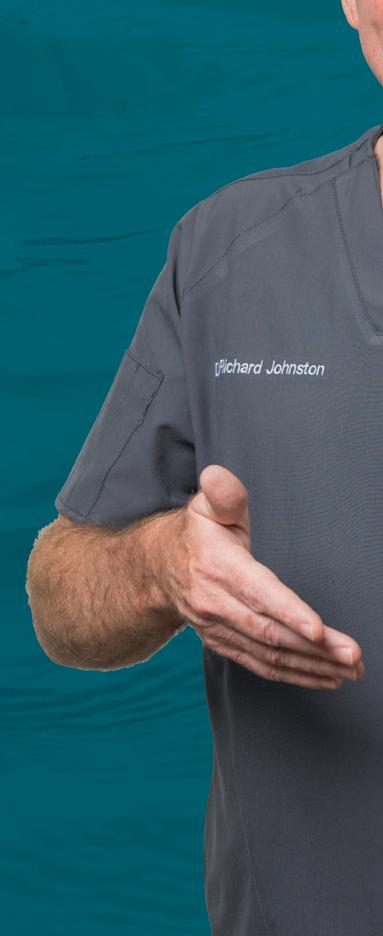

• Beautifully made partial and full dentures can be claimed through private health funds
• Dentures made by a qualified Dentist and Cosmetic Dental Technician and DVA
• Disabled Access
Ample
ician
Dr Richard Hamilton Johnston is a rare breed, Dr Johnston’s introduction to dentistry was as a top Cosmetic Dental Technician working in Brisbane. This means he is extremely good at making beautiful and functional dentures. Richard then took a hiatus from the dental profession and joined the Australian Defence force in Army Aviation. Dr Johnston then returned to the dental profession, qualifying as a dentist in 2008. This combination of Cosmetic Dental Technician and qualified Dentist, means Dr Johnston can look after all your dental and denture needs, understanding your oral anatomy, your dental health and how to create functional partial or full dentures that look amazing.
ASK US ABOUT DENTAL IMPLANTS AND OUR NEW REVOLUTIONARY SNAP IN DENTURES BY DR MICHEL ZABIK


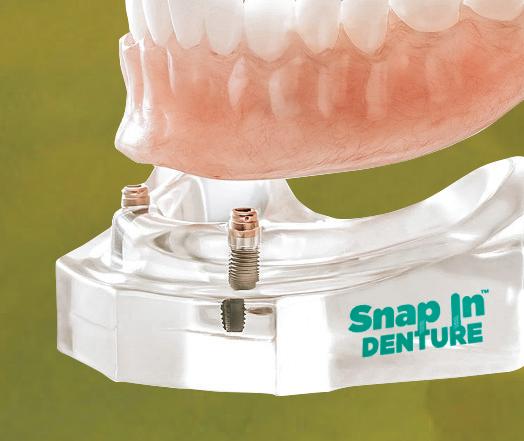

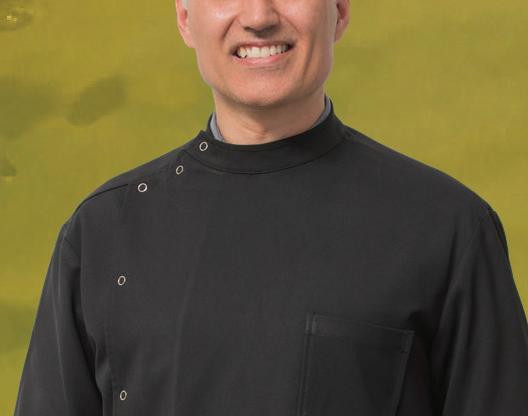
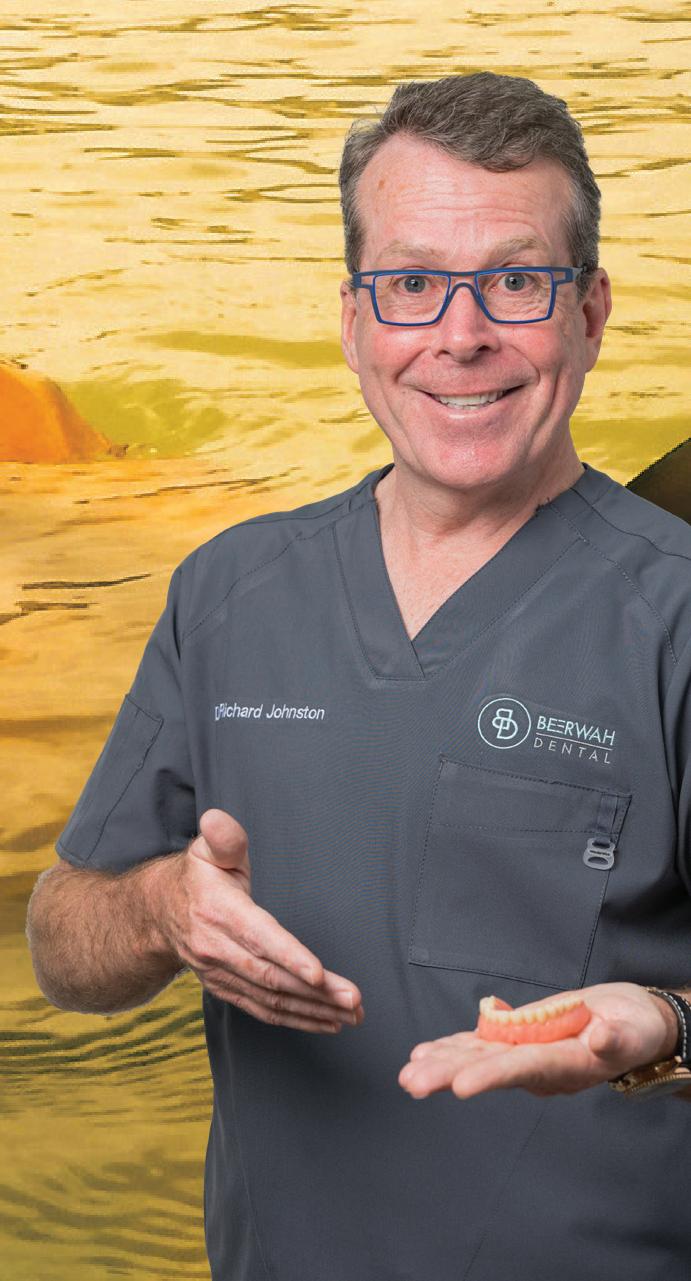

Palliative Care Australia and Dementia Australia have framed nine recommendations to deliver better quality of life to people, families, and carers travelling life’s journey with dementia.
“Dementia is the biggest health issue facing Australians over 65 years,” Palliative Care Australia Chief Executive Officer Camilla Rowland, said.
“We need to better integrate dementia care and palliative care so that the 400,000 Australians currently living with dementia can make the most of life - and for a lot of those people, that will mean many years of quality living and relationships.”
To that end PCA and Dementia Australia, have just updated a long-standing joint policy statement as part of ongoing advocacy efforts in the face of increasing demand for care.
“Demand for palliative care is increasing, we are on a trajectory towards a 50% increase in the next decade and the need doubling by 2050,” Ms Rowland says.
“The growing number of Australians with dementia is a key driver, the Australian Institute of Health and Welfare (AIHW) report that the number of people with dementia is expected to increase to more than 800,000 by 2058.
“Central to meeting that need is having a workforce that is trained and available,” Ms Rowland says.
The joint policy statement speaks to that and makes nine recommendations including:
Compulsory dementia and palliative care education for all health and care professionals involved in the delivery of care for people living with dementia.
Early involvement of the person with dementia, and their family members and carers, in discussions about palliative care.
Flexible models of palliative care which enable health and care professionals to provide the right care, at the right time and in the right setting to accommodate the changing needs of people living with dementia,
and their carers.
Improved access to specialist palliative care services in the community to address the complex needs of people living with dementia and their carers, and to enable greater choice in the type of care that is provided.
The implementation of nationally consistent advance care planning legislation to reduce jurisdictional confusion.
Encourage individuals to link advance care plans to their My Health Record to ensure they can be accessed by all health professionals involved in the care of the individual in a timely manner.
Dementia Australia CEO Maree McCabe says, “dementia is a terminal illness and appropriate palliative care is an essential element of quality care for people with dementia, and for their families and carers.”
“While we acknowledge the contextual complexities of dementia care within the different health care and
community settings, it is essential that streamlined services are developed and accessible for more effective home and community palliative care experiences.
“Improving palliative care for people with dementia, no matter where they live, must be a policy priority, Australiawide, across the states and territories.”
The full joint policy statement is available on the Palliative Care Australia website.
“We look forward to the continued interest of Minister Butler in this work, the reform agenda he and Minister Wells and Assistant Minister Kearney are leading is a foundation for the change we want to see, but more needs to be done and we are ready to play our part,” Ms Rowland said.
Smiling man with dementia.jpg 1.46 MB
“We need to better integrate dementia care and palliative care so that the 400,000 Australians currently living with dementia can make the most of life.”
Dementia Australia honours renowned broadcaster and Dementia Australia Patron Sir Michael Parkinson CBE, affectionately known as Parky, following his passing at the age of 88.
In honour of his mother, Freda Rose, who lived with vascular dementia, Sir Michael was a valued supporter of Dementia Australia and the former Alzheimer’s Australia NSW. In 2010, he was appointed as Honorary International Ambassador, Alzheimer’s Australia NSW and in 2017 accepted the role of Patron Dementia Australia.
As Patron Dementia Australia and an Ambassador for Alzheimer’s Australia NSW Sir Michael generously contributed to raising awareness and vital funds by sharing about the impact of dementia on his mother and his family.

Dementia Australia CEO Maree McCabe AM acknowledged Sir Michael’s extraordinary support in Australia, the United Kingdom and around the world for raising awareness about dementia.
“Since 2010 he was guest speaker at a number of significant Dementia Australia fundraising events, appeared in our Fight Dementia television advertisement in 2011, often shared his experience in media interviews, supported Memory Walk & Jog campaigns and other important fundraising activity,” Ms McCabe said.
“Sir Michael’s committed and farreaching advocacy has made a profound and lasting difference to the lives of people of all ages living with dementia, their families and carers in Australia and around the world.
“He was so gracious and generous and we are so honoured and grateful to have had his support.”
Fellow Dementia Australia Patron and Chair of ABC Ita Buttrose AC OBE recognised Sir Michael’s invaluable influence.
“I had the privilege of being inter-
viewed by him and interviewing him for television and for Dementia Australia,” Ms Buttrose said.
“Michael was the most generous of supporters. He was incredibly giving
with his time and sharing his personal experience to help others.
“Nothing was ever too much trouble for him.
“Like everyone whose lives have
been impacted by dementia, he knew what his advocacy work meant, and he worked tirelessly to raise awareness and funds.”
A Heart Foundation pilot program that recalls at-risk Australians via a text message from their GP clinic, is being seen as a potential lifesaver.
The Heart Health Check (HHC) Recall pilot study was rolled out in more than 200 GP clinics across the country, where about 42,000 at-risk Australian patients received an invitation from their GP to come in for a HHC via SMS, which led to a 14-fold increase in HHCs compared to control practices.
Results were recently published in the Australian Journal of General Practice.
The pilot is the largest targeted cardiovascular disease (CVD) screening trial of its kind in Australian general practice, potentially paving the way for a structured Australian CVD screening program in the future.

Heart Foundation Healthcare Programs Manager Natalie Raffoul said “this is the most robust Australian evidence we have that shows a targeted CVD screening program could be both effective and feasible in general practice.”
“Just like Australia has dedicated screening programs for many cancers, we need to consider one for Australia’s leading cause of death, heart disease.”
The pilot program sent direct SMS messages from GP clinics to existing patients, via the GoShare Plus software, embedded into established clini-

cal practice software via a randomised control trial design.
Patients who were invited to come in for a HHC via a personalised SMS met the following criteria;
Aged 45 to 74 years of age, Not already living with CVD, Had not had a health assessment or HHC in the previous 12 months, Total cholesterol and high-density lipoprotein cholesterol recorded in the previous 12 months, An active patient (at least three visits to the GP in the previous two years), Patients have avoided life-threatening events.
New South Wales GP, Dr Raya Grishina-Gunn said the pilot program allowed her to treat patients at high risk of having a heart attack or CVD event, unbeknown to them.
“Thanks to the HHC Recall pilot program, I identified several high-risk patients after conducting their Heart Health Checks,” Dr Raya said.
“Based on their results, some patients were then referred onto cardiologists for further investigation and procedures.”

While patients avoided potentially life-threatening events, the pilot program also afforded the clinic the opportunity to discuss and highlight the importance of a healthy heart.
“Thanks to the pilot program, it was found that some patients needed stents to rectify blocked arteries, some patients who were found to be at high risk

of having a heart attack or stroke in the next five years were prescribed medication, while I worked with others to help them make lifestyle changes to lower their risk and keep on top of their heart health,” Dr Raya said.
After the personalised messages were sent to those patients who met the program’s criteria, Dr Raya’s clinic was surprised by the number of booking requests that came through.
“Our patients were really excited to be recalled in for a HHC and our phone lines were very busy with people wanting to book a check after the messages went out,” she said.



One of those patients was grandmother of two, Katrina Wilkes who responded to an SMS inviting her to Dr Raya’s clinic for a HHC, as part of the HHC Recall pilot program.
The proactive 59-year-old has spent her adult life committed to keeping her heart healthy, after she lost her dad to a massive heart attack when he was 47.
“I have always been physically active, followed a healthy diet, looked after myself and felt well,” Katrina said.
“If I had not received that SMS inviting me in for a Heart Health Check, the situation could be very different today.”
After completing the 20-minute Medicare-subsidised HHC as part of the pilot program, Katrina was shocked when she was told she had high cholesterol and high blood pressure; and both
needed to be treated with medication.
“Dr Raya also referred me to a cardiologist, where I underwent an angiogram and coronary artery calcium scoring, and it was revealed I had calcification of the arteries,” she said.
“I couldn’t believe it. I had done sport all my life, I follow an excellent diet but I had serious and deadly heart issues, which could have led me to suffering a heart attack.”
Katrina believes programs like the HHC Recall pilot can change lives.
“My husband and I want to enjoy life, we adore and cherish the moments we are with our children and grandchildren, and I want to be around for them and with them; I want to be around for a long time; and now thanks to the right intervention; my medication, I can,” she said.

Being at high risk of heart disease can be almost completely symptomless until it’s too late.
Quite often, the first sign of heart disease is a heart attack.
“International CVD and chronic disease screening programs have been rolled out in the UK and New Zealand, helping to boost early detection of CVD and help people better manage their risk factors,” Ms Raffoul said.
“The time has come for Australia to reap the health and economic benefits of developing its own CVD screening program.”
With Australians now back enjoying air travel post-Covid, it’s timely to look back at where the Sunshine Coast Airport all began.
The first aircraft to land at Maroochydore, on 1 February 1922 was an Avro 504K, rego G-AUDA, owned by the Aero flight Aviation Company, Bulimba.

It was the dire need for cigarettes, and navigating with what they thought was an accurate map which showed no township, that they decided to land on the beach and investigate.
Capt P.W. Snell and Lieut S.W. Bird were delighted to discover the town of Maroochydore.
They lamented that aviation in Queensland was hampered by the lack of available maps and stated New South Wales’ maps would not miss a township of such importance as Maroochydore.
Messrs J.T. Lowe and F. Goeths were taken up on a flight over the area and out to sea much to their enjoyment.
Great excitement was in the air during the Christmas holidays of 1926 when an aeroplane from the Eagle Aviation Company came to Maroochydore, offering flights at a moderate price.
On December 24, 1926 The Nambour Chronicle reported that if the bright weather continued, the thrill of flying through the air would prove most invigorating and there would be an opportunity to organise an inaugural series of flights, which would run daily.
The article continued “Mr T. O’Connor whom we understand is responsible for the inauguration of this pleasure, is worthy of congratulation in this endeavour to provide novel enjoyment.”
The flights were 15 minutes going south to Caloundra and then north to Coolum. Those who “flew aloft” were delighted.
A photo of a damaged plane on the beach was thought to be the same aircraft, however John Stitt in his booklet “Maroochydore Aerodrome, Aerodrome Road” offers another scenario.
Mr Leslie Kewell who won distinction as a “Ferry Pilot” during the Great War was flying in an antiquated De Havilland, which he had commented was like flying a brick, when a large sheet of three-ply was torn off by the wind from near the nose of the aircraft. It sped past the mechanic’s head towards Mr Kewell who caught it in mid-air. Nonplussed he handed it to the mechanic and landed, so repairs could be made.
Continuing the journey, another forced landing occurred 40 miles out from Brisbane and the plane had to be abandoned on Maroochydore Beach.
In 1928 a site was selected for an aerodrome on the plain near Maroochydore Beach. The land was cleared and a landing strip marked out.
In 1930, The Nambour Chronicle reported that a commodious and suitable site at Maroochydore was expected to be set aside and work prioritised to bring it up to requirements laid down for registration by the Civil Aviation department.
In December 1930, a monster aerial pageant was advertised in The Nambour Chronicle. Attractions were aerial bombing, parachute jumping by the
celebrated Captain Erho and an open pilot’s race.
It is not known when the last aeroplane landed at the aerodrome. However, a Chronicle article in November 1937 advised that after an inspection of the Maroochydore Aerodrome it would cost 2,000 pounds to improve the runway for modern aircraft. And so, the search for a new airport site began.
In 1954, a site for a future airport was proposed by the Near North Coast and Mary Valley Council Progress Associations.
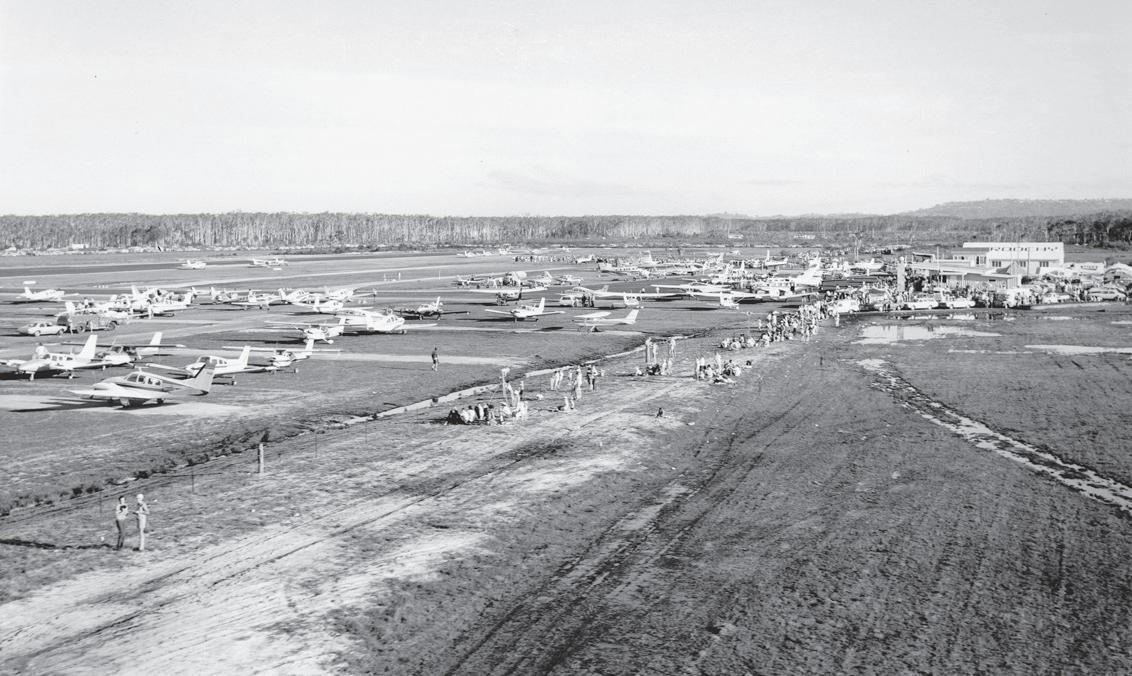
Mr David Low MLA contacted Roy Kassulke, who was a bold, young pilot, and asked what would be the best way to get an airport to which Mr Kassulke advised “seek interest in the formation of an aero club”.
On May 29, 1959 a meeting was held in Nambour with 120 people in attendance - the Maroochy Aero Club was founded.
Prior to this in 1958, Fred Murray had surveyed the site which was no easy task. In his memoirs he explained that there was no bridge over the Maroochy River at Bli Bli so he and his offsiders had to row across to where they were to be met by Stewey Cook and his Massey Ferguson tractor and trailer. The track wound through sugar cane fields, dense tea-tree scrub and equally dense swarms of mosquitoes and sand flies.
A runway 2000 feet long was constructed by Pacific Paradise Development Company and was paid for by a 25 per cent Federal Government subsidy, 50 per cent State Government subsidy and 25 per cent from Maroochy Shire Council. The Courier Mail at the time reported the development cost 3,000 pounds.
The runway had a false start when upon completion David Low contacted Roy Kassulke and asked him to come and test the runway. He and a couple of his fellow pilots, Lindsay Mullen and Bill Edgar flew up to test the strip and found it was too soft and boggy for a safe landing. When consulted again, Roy Kassulke asked if a car could be driven up and down the strip without issues and was told it could.
As a result on Friday August 14 1959, Roy Kassulke was the very first pilot to land an aircraft on the newly constructed airstrip. The aircraft was a HT-2 Hindustani Trainer on loan from the Indian government. A day later, the bridge over the Maroochy River was opened providing access to the aerodrome from Maroochydore.
On August 12, 1961 Senator Shane Paltridge, Federal Minister for Civil Aviation, officially opened the Maroochy Airport in front of a huge crowd. Many critics slated it as a white elephant and David Low’s big mistake but it was not

long before the wisdom of his foresight was realised.
The first hangar was built and in 1965 the first flying school, Sunland Aviation began lessons. The formation of the very popular Maroochy Aero Club together with the flying school laid the foundations for what was to become a bustling airport.
Over the years, the airport has had its fair share of celebrity visits, most notably Princess Diana and Prince Charles in 1983 when they flew in at the start of their visit to the Sunshine Coast.
The Sunshine Coast hosted the 2002 Commonwealth Heads of Government Meeting (CHOGM) creating a huge day for the airport. Visiting dignitaries and VIPs came from all over including Her Majesty the Queen, the British Prime Minister, Tony Blair and Australia’s Prime Minister, John Howard.
When the time is right following the impacts of Covid-19 restrictions, the airport will welcome increased flights from across Australia, Asia and the Western Pacific enhancing the Sunshine Coast’s national and global connections.
It has been a long journey from Captain Snell’s and Lieutenant Bird’s landing on a sandy stretch of beach to what is now a state of the art international airstrip.
A new plan is set to help protect the region’s “ancient mariners’’ with citizen scientists set to play a major role.
The Sunshine Coast Marine Turtle Conservation Plan was adopted by the Sunshine Coast Council in August.
It includes extensive input from the region’s turtle champions and outlines council’s plan for the recovery of marine turtle populations on the Sunshine Coast.
To do this, it will take steps to reduce threats to marine turtles, such as light pollution, and strengthen support of the dedicated community volunteer programs – TurtleCare Sunshine Coast and Coolum and North Shore Coast Care.
Steps to reduce threats to marine turtles will include addressing the impact of lights.
Bright artificial light can confuse hatchlings, leading them away from the sea and leaving them exhausted and even more vulnerable to predators.
It can also be a major issue for nesting mothers, stopping them coming ashore.
Addressing lighting impacts on marine turtles were among the highest priority actions identified by the community during consultation for the plan.
The conservation plan will now work towards ensuring existing public lighting in sensitive coastal areas is more turtle friendly.
Solutions include retrofitting light poles with smarter, amber lights or installing light shields that restrict glare.
A toolkit will be prepared for the development sector, local businesses and residents to give practical advice on
suitable products and designs to reduce light pollution.
Another positive change will be the development of a locally refined marine turtle dune vegetation plan so the right type of grasses, shrubs and trees are planted in the dunes to create a darker, more inviting and accessible space for turtles to nest.
The citizen science program is very popular, and is supported by more than 200 citizen science volunteers.
This plan will also focus on gradually growing the number of turtle-focused citizen scientists, through diversifying opportunities and integrating indigenous cultural knowledge.
Another key action of the plan is to build capacity and employment opportunities for the local traditional owners to be involved in marine turtle conservation management.
Council’s Environment and Liveability Portfolio Councillor Peter Cox thanked the community for providing feedback to help protect marine turtles.
“This plan sets us on the right track to help save one of the Sunshine Coast’s most beloved marine animals,”
Cr Cox said.
“Generally, the community feedback on the draft plan aligned with council’s position and had a strong call to address light pollution for turtles.
“By implementing our threatened species management plans, such as this one, we are protecting and enhancing our natural landscapes and its inhabitants and delivering on the Sunshine Coast Environment and Liveability Strategy.”
Actions were added to the plan to address potential threats to turtle populations through willful vegetation damage and disturbance from dogs off-leash. What council is doing now to protect turtles
Cr Cox said council was already working to protect turtles on the Sunshine Coast.
“It won’t be until 2035 that we will start to see the benefits of our long-term investment in turtle conservation and the amazing annual work of the three turtle citizen science groups within the Sunshine Coast rookery,” Cr Cox said.
“We have the amazing TurtleCare citizen science program keeping a watchful eye on our nesting mothers and hatchlings, with Coolum and North Shore Coast Care in the north and Bribie Island Turtle Trackers in the south.
“There are four light reduction projects underway including a project to retrofit public lighting at Shelly Beach, a turtle lighting co-design for behaviour change program, a study into hatchling behaviour and glass tinting and a pilot ‘Trees for Turtles’ planting event.
“Council will also trial a communityled project called TurtleCare Hatchlings to engage the region’s youth in turtle
conservation activities.”
About the marine turtle plan
A strong partnership across the region led to the plan’s development with Sunshine Coast Council, Councillors, Kabi Kabi First Nation Peoples, Queensland Government, an independent Technical Advisory Panel and community leaders of TurtleCare, Coolum and North Shore Coast Care and Bribie Island Turtle Trackers volunteers all collaborating on the plan.
It supports efforts by the Queensland and Australian governments to stop the decline of marine turtle populations, and will guide council decision making to achieve future conservation and management goals for nesting marine turtles and hatchlings within the Sunshine Coast Local Government Area.
It is particularly focused on the nesting and hatchling success of the critically endangered loggerhead and vulnerable green turtle populations—the two species that arrive every year to lay their eggs on our Sunshine Coast beaches.
Its goal is to support the recovery of self-sustaining populations of marine turtles on the Sunshine Coast by reducing threats, improving habitat quality and strengthening community-based management.
The implementation plan will be reviewed and updated annually.
The adopted Sunshine Coast Marine Turtle Conservation plan is available at sunshinecoast.qld.gov.au by searching “turtlecare”.
A full summary of the feedback received during community engagement and council’s response is available at haveyoursay.sunshinecoast.qld.gov.au

Wondering what to do with the grandkids these school holidays? Or just looking for a new free experience for yourself and friends?
Sunshine Coast Museums have you covered. Read on or visit www. heritage.sunshinecoast.qld.gov.au
MYSTERY MADNESS MONTH
September is Museum Mystery Madness month at Sunshine Coast Museums. Visit participating museums to enter a Mystery Quiz for your chance to win one of four gift vouchers. Each museum has a different quiz. You can enter a quiz at any of the museums, even all of them!
During the school holidays, quiz participants also get a chance at the instant lucky dip. It’s fun for the whole family!
Landsborough Musuem
You can now enjoy a visit to Landsborough Museum for FREE. The museum is open Wednesday to Sunday, 10am – 3pm and each month, you’ll find an exciting and varied range of monthly events, workshops, and kids’ activities.
Kids’ Corner
Enjoy fun and free activities at Landsborough Museum on the fourth Thursday of the month.
No registration required!
Story time and craft
Thursday 26 October, 10am-11am
Join libraries to celebrate Grandparent’s Month.
Make a lighthouse
Thursday 23 November, 10am-11am
See the real Caloundra Lighthouses lamp and be inspired.
Make a day of it at Bankfoot House Nestled in the foothills of Mount Tibrogargan, in Glass House Mountains and boasting stunning views and open green spaces, you’ll find heritage listed Bankfoot House.
This unique day for the whole family offers a raft of experiences yearround. Kids will love the VR experience which takes you back in time to before European settlement of the site.
Visitors can enjoy free one-on-one tours of the old house and a self-guided tours of the shed restoration project available.
Bring a picnic relax and enjoy the grounds, with large wooden games available to enjoy.
Bankfoot is open Wednesday to Sunday from 10 – 3 and you’ll find it at 1998 Old Gympie Road, Glass House Mountains.
Want an extended adventure?
You’ll find four nearby adventures to be found in the area with Adventure Sunshine Coast https://adventure.sunshinecoast. qld.gov.au/
This is your one-stop-shop for all your walking, biking, paddling and horse-riding adventures on the Sunshine Coast.
Visit the site, choose how easy or hard you want to go, the type of trail and boom! You’ll be presented with a host of adventures along with directions, pictures, descriptions and reviews.
Dates for the Diary
·
13 September – 14 January – Secret recipes exhibition at Bankfoot House
· 13 September – 14 January – 50 years exhibition at Landsborough Museum
· 22 September – Bush Tukka Presentation and tasting at Bankfoot House ($10)
· 6 October – Cobb and Co Coach History at Bankfoot House
· 21 and 22 October – Sunshine Coast Open House
· 3 November – Fake news in WW1 at Landsborough Museum
· 1 December – Mountain rescues at
Bankfoot House Volunteers always welcome We always welcome volunteers at Bankfoot House and Landsborough Museum. If you’re interested, Register your interest or to find out more contact Cultural Heritage Services:
Email culturalheritage@sunshinecoast.qld.gov.au Phone 07 5420 8600
Discovery Guide
If you loved Bankfoot House and Landsborough Museum, check out the Discovery Guide. Your comprehensive heritage guide to the Sunshine Coast region.
https://heritage.sunshinecoast. qld.gov.au/museums-and-places/ heritage-discover-guide
Plus, when you pay for your next entry to a Sunshine Coast museum, or give a donation, you will receive a Museum VIP card that will give you discount at other museums. Only available at participating museums.
This free community event offers rare behind-the-scenes tours and special experiences.
Visit Bankfoot House and Landsborough Museum on 21 Oct & 22 October to take a look behind the scenes!

Serves: 1
Ingredients
· 4 small salad potatoes, unpeeled

· 1 large egg
· 0.5 cup green beans, topped and tailed
· 1 tb extra virgin olive oil

· 1.5 tsp red wine vinegar (or lemon juice)
Method:
1. Place the potatoes in a small saucepan and cover in water. Bring to the boil, reduce heat to simmer and cook for about 15mins or until a knife pierces easily. Do not overcook or your potatoes will be soggy. Drain and set aside to cool completely. Cut into thick slices.
2. Hard boil the egg. You can do this in the same pan as the potatoes if you wish – add while the water is simmering and remove with slotted spoon after 8 minutes. Peel and quarter.
3. Place the green beans in a glass bowl, add a splash of water and cook in the microwave for 3 minutes or until al dente. Immediately plunge into a bowl of iced water to stop the cooking process and ensure the beans stay a lovely bright colour. Drain and set aside.

Serves: 4
Ingredients
· 4 large eggs
· 3 fillets (about 350g) snapper (or whatever fish you fancy)
· 2 cups milk
· 1 tsp black peppercorns
· 2 bay leaves
· 2 tbsp extra virgin olive oil
· 2 cloves garlic
Method:
1. Place the eggs in a saucepan, cover with water and simmer for 8 minutes to hard boil. Drain, pour over cold water and when cool enough to handle peel and quarter. Set aside.
2. Meanwhile place the fish in a frying pan and cover with the milk. Add the peppercorns and bay leave. Bring to a simmer, cover with a lid and cook for about 5 minutes (depending on thickness of fillets) or until the fish is cooked through. Remove the fish from the pan, take off and discard the skin and roughly flake the flesh leaving in nice bite sized chunks, removing any bones. Remove the peppercorns and bay leaves from the milk, reserving the milk.
3. Wipe out the frying pan and heat the
· 1 tbsp grated fresh ginger
· 1 tbsp curry powder
· 1 leek, finely sliced
· 450g packet cooked brown rice (or use leftover cooked brown rice that has been kept in the fridge)
· 1 cup frozen green peas
· Handful of fresh coriander (or parsley if you prefer), washed and roughly chopped
· 2 green onions, sliced
extra virgin olive oil. Add the garlic ginger and curry powder. Stir for 30 seconds or so until fragrant. Add the leek to the pan and sauté for a couple of minutes to soften, taking care not to let it burn.
4. Add the rice to the pan and stir through to cover with the spice mix. Pour in about half of the milk and cook for a few minutes until the rice absorbs most of the milk. Add a little more if it dries out.
5. Add the peas to the pan and stir through, cooking until heated through. Add the fish along the fresh coriander and gently stir through. Season to taste.
6. Spoon into warmed bowls and top each bowl with a quartered egg and scatter with the green onions.
· 0.5 tsp Dijon mustard
· 0.25 tsp honey
· 1 x 95g can tuna in spring water, drained
· 3 anchovies (optional)
· 6 pitted black olives
· 8 cherry tomatoes, halved
· 1 cup mixed salad leaves
4. In a small bowl whisk together the oil, vinegar, mustard and honey (or shake in a small jar).
5. Now you are ready to assemble your salad jar. Pour the dressing into the bottom. Then layer in this order: the tuna (it is much improved by marinating in the dressing), anchovies, olives, tomatoes, green beans, sliced potatoes, egg quarters and finally the salad leaves. Pop on the lid and make sure it is securely fixed. Keep upright in the fridge and in your bag if taking to work, until ready to serve.
6. When you’re ready to eat simply take off the lid, cover with a plate and invert the jar to transfer the contents onto the plate finishing with dressing drizzled over the top.
Recipe courtesy of Australian Eggs.
At Best Practice Eyecare, their ophthalmologist Dr Michael Karpa treats conditions including two potentially blinding diseases: Age-Related Macular Degeneration (ARMD) and Glaucoma.


Regular screening with an optometrist, early intervention and compliance with recommended treatment plans can prevent low vision and blindness.
The highly skilled, dedicated and caring staff at Best Practice Eyecare will assess and assist throughout the journey.
They offer the latest therapies and technology, including SLT laser and sub cyclodiode laser, for treating glaucoma without needing drops.
Age-Related Macular Degeneration, a progressive eye condition affecting the macula, can lead to permanently reduced vision, blindness and severely impact quality of life.
Macular degeneration is Australia’s leading cause of permanent vision loss in people over 40.
The macula is the central part of the retina responsible for your fine vision, such as reading vision.
To prevent vision loss and blindness from macular degeneration, regular eye examinations are essential. Early diagnosis allows for appropriate treatment strategies to reduce disease progression and the risk of blindness.
When macular degeneration causes significant vision loss, support is essential.
Joining support groups or seeking counselling can help navigate the challenges associated with vision loss.
Medical treatment, lifestyle modifications, and support services are comprehensive approaches to managing macular degeneration.
Glaucoma, often called the “sneak thief of sight,” is a group of eye conditions that damage the optic nerve, typically due to increased intraocular pressure.
While there’s no cure for glaucoma, effective management can prevent further vision loss and blindness.
Regular eye examinations are crucial for early detection, especially for persons over 40 with a family history of glaucoma, high intraocular pressure, diabetes or previous eye injury or surgery.
Glaucoma can affect anyone. Celebrities including Bono, Whoopi Goldberg, Andrea Bocelli and Christie Brinkley are treated for glaucoma.
Eye drops, oral medications, laser therapy, or surgery might be recommended based on the type and severity of glaucoma.
Adhering to prescribed treatments and attending follow-up appointments is vital to preserving vision.
Living with glaucoma demands lifestyle adjustments.

Managing stress, maintaining a
healthy diet, staying physically active, and avoiding smoking can contribute positively.
Ongoing communication with eye care professionals such as Dr Michael Karpa and his team and glaucoma support networks aids in navigating the challenges of living with glaucoma.
Guy Grossi comes North
Settimo restaurant an ode to the coast of Italy, is located on Mary Street, in the city centre. The menu pays homage to Amalfi and is inspired by the flavours and culture of Southern Italy. Loaded with fresh produce, it’s a menu Chef Grossi can hang his Italian roots, hat on.

A vibrant space adorned with contemporary, artwork and Italian trinkets, layered with soft, pastel hues and coastal interiors. The result is a relaxed, dining space, a place to indulge in fresh pasta and fine wine. There’s an intimate, private dining room, ideal for a long lunchItalian style.
Chef Grossi has created an authentic dining experience, and has brought his tightly held, southern reputation to Brisbane. Threading the menu with local produce from the surrounding food bowl and sea- the result is a flavour packed menu that considers Queensland’s, tepid climate.
Styled to impress, the open plan kitchen has been designed for the chefs to interact, as guests watch them weave their talents into each dish. The lively
space is a visual splendour, and we are instantly seduced by the aromas wafting across the dining hall.
We choose the ‘Pronto’ lunch available from Tuesday to Friday, it’s affordable and abundant at just $50 per person (minimum 2 people). We start with Pane and Olio-crusty bread and Grossi olive oil, followed by Pizza Fritta-fried balloons of pizza bread with lashings of tomato, spinach and provolone- simple yet tasty.
We can’t go past the ‘Pasta Al Limone’ lemon, butter and parmigiana, for our pasta dish, afterall this is Brisbane’s answer to the Amalfi Coast. Grossi says that the best dishes are quite often the simplest ones, just 3 ingredients and you’ll be transported to Italy.


Paired with sides of local Green Beans and Burrata, we are satisfied with the amount of food on the ‘Pronto Lunch’but wait there’s more the ‘Dolci’ biscotti del Giorni, cookies of the day, deliciously sweet. Settimo feels like a place you’ve come home to, a bustling, local’s eatery with a global twist. Brisbane has welcomed Grossi’s signature style, with linen draped tables, a fine selection of wines and wafts of southern Italian flavours-a welcome addition to the city’s burgeoning food scene.
·
Kylie Mitchell-Smith
·Travel Writer/Podcast Host
· www.travellingsenorita.com· @travellingsenorita

It is handy having a capital city just down the road because it attracts events like The Good Food and Wine Show which makes a return to the Brisbane Convention and Exhibition Centre, South Brisbane, this October, celebrating the very best Australian produce, winemakers, artisans, and chefs from around the nation.
In its 22nd year, the Show takes guests on an epicurean journey around the country’s top wine regions; pour tipples of over 500+ wines from the likes of Barossa, McLaren Vale, Southern Queensland, Margaret River, and Clare Valley; plate up over 60 different cheeses from Queensland to
Food.
France; and host brand-new masterclasses and chef demonstrations like never before.
Brisbane will host the finale of the National tour from 27-29 October, following a delectable journey around
the nation starting in Melbourne in May, followed by Sydney in June and Perth in July.
Celebrity chefs, Nagi Maehashi of RecipeTin Eats, Miguel Maestre, Justine Schofield, and Kirsten Tibballs will ignite the stages with flavour on The Kitchen by Harris Scarfe, alongside Northern Ireland-Australian celebrity chef Alastair McLeod, the Master of Ceremonies for all events.
Fan favourites, Brendan Pang, Miguel Maestre. Kirsten Tibballs, and Charlotte Ree will also take over two brand new stages to demonstrate their culinary flare and expertise – The v2food Plant-Based Cooking Stage
and The Baking stage.
The three-day event will see the return of over 300 exhibitors showcasing their unique produce and artisan expertise. Step inside the Cheese Corner, the destination for all things cheese; the Good Food Village, a market style hub to try and buy artisan products from local producers; and the Wine Regions – Barossa, Margaret River, Clare Valley, Southern Queensland and McLaren Vale.
For more information, visit: https:// goodfoodshow.com.au/brisbane/ THE GOOD FOOD and WINE SHOW:
Toowoomba’s Carnival of Flowers is set to bloom again as it runs all September as the perfect Spring celebration.
The superstars of the Toowoomba Carnival of Flowers are the city’s parks, gardens and public spaces, all meticulously planted in designs that are seen only when in bloom. All are free to wander and enjoy.


While this year marks the 74th Toowoomba Carnival of Flowers, it is also the 50th anniversary of the Exhibition Garden program, which highlights private gardens that flourish all year. The Exhibition Garden program has raised over $800,000 for charities and will run this year from Friday 15 to Sunday 24 September.

The event that stops the city is the famous Grand Central Floral Parade, which will be held on Saturday 16 September, again at the earlier time of 10am, with the theme Create a Buzz.
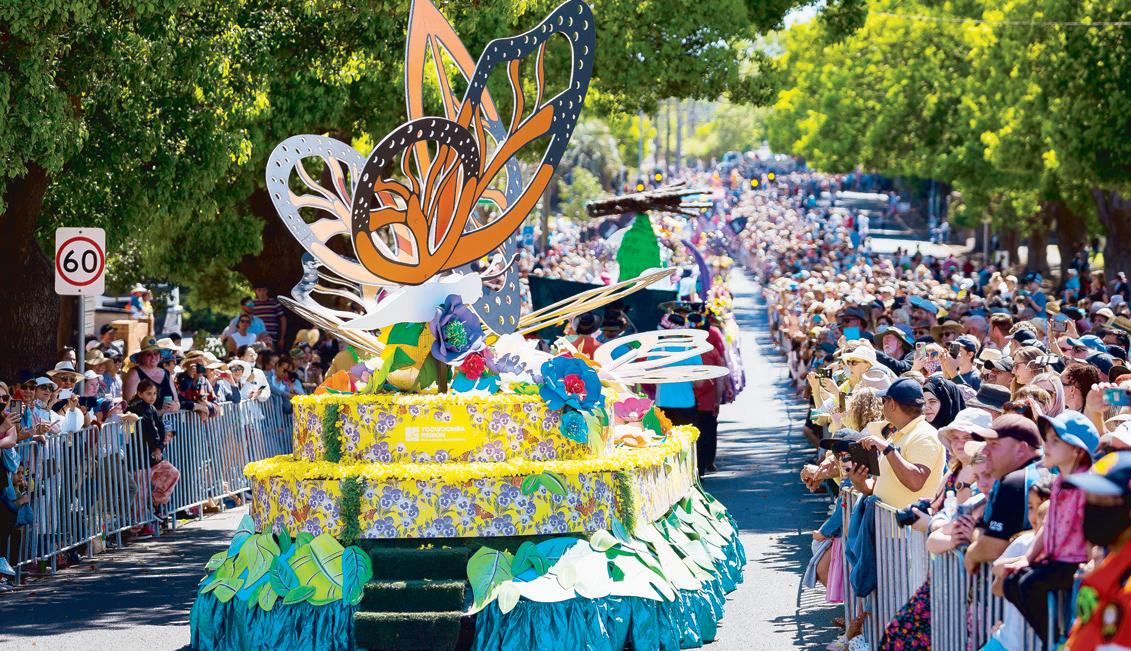
The popular Festival of Food and Wine will be held from 8 to 10 September in Queens Park. Jon Stevens, Eurogliders, Hoodoo Gurus, Sneaky Sound System, Budjerah and other leading and local sound-makers headline on stage while famed foodie Justine Schofield will give Farm to Fork demonstrations, leading the flavour charge of over 20 local food offerings, 15 pop-up local Cellar Doors, feature floral designs, flower crown making, cocktail bars and floral beer options! In the Botanic Gardens at Queens Park the Ferris Wheel program has been extended to run 15 to 30 September.
This year there are more Twilight Tours of Laurel Bank Park, and for a good reason. Ticketholders see and hear from experts about the darker side of plant life in a one-hour nocturnal tour, meet shady characters like English and Spanish oaks, Gingko trees and Japanese maples and track down exotic and rare species. Tours will be held every Wednesday to Saturday through September.
And …. the Teddy Bears are back.
After the success of the inaugural Teddy Bear’s Picnic at Picnic Point, it’s happening again on Saturday 23 September from 8.30am to 11.30am. With activities, fairy bread making, face painting, food stalls and of course a Teddy Bear Parade, this is one for the young, and the young at heart!

Flavour lovers are in for a feast this year. The regional food trail #trEATS (Toowoomba Region EATS) returns, with a record number of 51 cafes, restaurants and bars offering a signature springtime dish inspired by the event.
The Talking Pubs Tours will feature four character-filled Toowoomba pubs,
while taking in the city’s hidden laneways, home to some fantastic street art. If that’s not enough, the progressive Foodie Dinner Tours visit three venues all via luxury coach! Watch out for famed local brewer 4 Brothers Brewing’s signature floral beer, and Toowoomba Region’s first artisan distillery in Pechey Distilling Co which works botanical magic with their gin and vodka. Cinema Under the Stars returns on Saturday 30 September, along with the fabulous Hanging Baskets at Cobb+Co Museum, Sideshow Alley in Queens Park from 15 to 17 September, the city-wide Heritage Bank Parkland Entertainment program featuring local musicians and the hugely popular Petals and Pups program.
There are 53 community events and tours, as well as the Chronicle Garden Competition, and for three nights
from 15 to 17 September the skies over Toowoomba will light up with breathtaking firework displays!
From a record number of EATS on this year’s regional food trail, to the number of dog friendly places to stay and floats in the Grand Central Floral Parade, here are some of the 2023 fun, floral facts and figures:
· 37.2 million petals across Council’s parks in the city and Spring Bluff
· 190,000 blooms
· 30 days
· 50th anniversary of the Exhibition Garden program
· More than $800,000 raised over 50 years of Exhibition Gardens
· 69 floats and groups in the Grand Central Floral Parade
· 20,000 people to attend the Festival of
Food and Wine
· 17 musicians and bands appearing at the Festival of Food and Wine
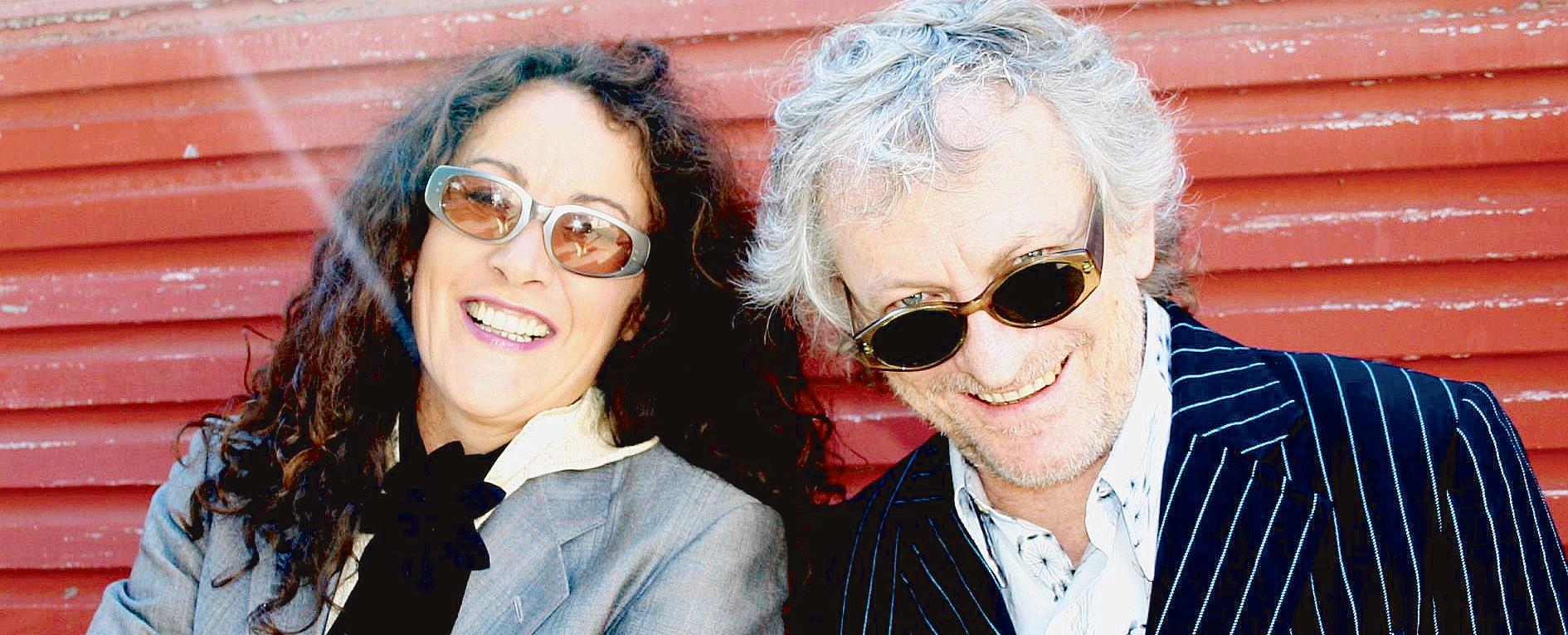

· 40 flavour makers, winemakers and brewers at the Festival of Food and Wine
· 1 Teddy Bear’s Picnic
· 2,715 times the Ferris Wheel goes around over 16 days in Queens Park
· 51 #trEATS on the regional food trail program, a new record!
· 1 Floral Beer
· 3 Botanical Local Gins and Vodkas
· 50+ Hanging Baskets!
· 19 dog friendly accommodations in TOOWOOMBA (Petals and Pups)
· 50 community events
· 75 local performances in our Heritage Bank Parkland Entertainment sessions
· 14 foodie tours
· 18 Twilight Tours of Laurel Bank Park
· 3 nights of fireworks
· Millions of smiles
TICKETS to the Festival of Food and Wine are on sale NOW at tcof.com.au
Toowoomba Carnival of Flowers 2023
· 1 – 30 September 2023
· tcof.com.au
Festival of Food & Wine
· 8- 10 September 2023
· tcof.com.au
If you’re taking the grandkids to the Gold Coast for a short break and a theme park or two– you might want to choose 21 October.
The most action-packed and fullthrottle family fun motorsport in the world roars into the Gold Coast for the first time ever on that date.
Monster Jam, which organisers bill as the most unexpected, unscripted and unforgettable motorsports experience for families and fans in the world.


It roars into the Gold Coast (for the first time ever) for an adrenalinecharged weekend at Cbus Super Stadium on October 21.
The dirt-tearing spectacle is back in Australia after six years away – and we have missed them!
At Monster Jam, world champion athletes and their 12,000-pound monster trucks tear up the dirt in wide-open competitions of speed and skill.

A stadium-only event, the competition is the biggest, boldest and loudest of its kind.
In addition to seeing heated rivalries, high-flying stunts and fierce head-tohead battles, Gold Coast fans will witness the Australian debut of four Marvel Monster Jam trucks: The Amazing Spider-Man, Iron Man, Black Panther, and Thor face off against fan favourites the legendary Grave Digger®, El Toro Loco®, Max-D and Megalodon® in Freestyle, Skills and Racing competitions.
This year’s Monster Jam event features skilled athletes fighting for the event championship while putting on a spectacle, constantly innovating and always entertaining.
Monster Jam drivers are trained, world-class male and female athletes who have mastered not only the physical strength and mental stamina needed to compete, but the vital dexterity to control 12,000-pound machines capable of doing backflips, vertical twowheel skills and racing at speeds up to 70 miles-per-hour to produce jawdropping, live motorsports action seen around the world.
Some impressive Monster Jam facts include: Each engine delivers about 1500 horsepower; it takes 1500-man hours to build and remove a track; 113
litres of paint are used to paint the track and obstacles.
If the competitions aren’t enough, there will be a Monster Jam ‘Pit Party’ from 9am - 11:30am, the only place that
allows up close access to the Monster Jam teams.
Fans will get to see the massive trucks up close, get an inside look into how they’re built, meet their favourite
drivers, take pictures, get autographs, and so much more.
Tickets are on-sale now to the general public: www.ticketek.com.au/MonsterJam

When: Saturday 21 October, 2023 1pm and 7pm | Pit Party 9am –11:30am
Where: CBUS Super Stadium, Centreline Place, Robina, Gold Coast
Best transport options to location here
Truck lineup: Grave Digger® driven by Matt Cody; El Toro Loco® driven by Chelsea VanCleave; Megalodon® driven by Charlie Pauken; Max-D™ driven by Blake Granger; The Amazing SpiderMan driven by Bernard Lyght; Iron Man driven by Brandon Arthur; Thor driven by Myranda Cozad and Black Panther driven by Bari Musawwir
**Truck and driver line-up subject to change
For more info about a Monster Jam event near you, follow Monster Jam on our social media channels: Facebook, Twitter, Instagram and TikTok. Subscribe to the Monster Jam YouTube Channel at youtube.com/MonsterJam



As the southern states come out of the depths of winter, and the spring flowers begin to bloom- it’s the ideal time to visit Melbourne and the Mornington Peninsula.

Explore the vibrant, city of culture and take a side trip to the picturesque East Coast, indulging in hot springs, farm gates and award-winning wineries, along the way.
More recently an array of international hotels and restaurants have reopened in the city, which has enabled Melbourne to bounce back to its former glory. We choose to stay at the Pan Pacific hotel, located in the lively South Wharf precinct.

The hotel boasts uninterrupted views across Port Phillip Bay and the Yarra River, with the city lights beyond. Affordable and convenient, the hotel is ideally located on the edge of the CBDjust a short stroll, tram or boat ride into the city centre. We suggest indulging in the decadent high tea and seasonal menu curated by famed Chef Deepak Mishra, in the hotels Dock 37 Bar.
Melbourne is rich in-migrant history and is home to some of the most authentic European cuisine. Such as the Grossi family, headed up by lauded Chef Guy Grossi, a culinary collective that includes Florentino restaurant, a luxurious Italian dining experience-this year marks the 95th year of Florentinothat’s a good innings.






Downstairs from Florentino is Grossi Grill, a sophisticated yet simple take on Tuscan food, think pasta, pane and vino, the kind of place where one dessert and Aperol spritz is never enough.
The historic Bourke Street location is home to the bustling Cellar Bar ‘a little piece of Italy’-where good coffee, freshly baked sourdough and delicious cannoli are on order. Next door is Ombra Salumi Bar, the spot for an afternoon aperitivo, cured meats and pizza- located up the road from Pelligrini’s, also a Melbourne institution.
After all that food (and drink), it’s time to wander the many laneways that make up the fabric of Melbourne. We suggest starting at the top end of Spring Street, next to the Theatre District, meandering down Flinders Lane to Swanston Street, stopping off at the many,
boutiques and bars along the way.
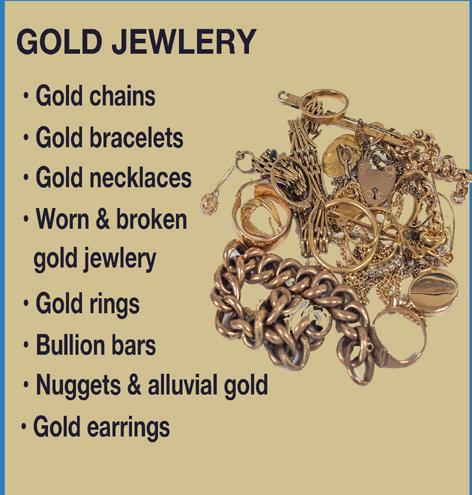


Walk down Hosier Lane (Graffiti Lane) and admire the talent of the many street artists that adorn the rustic walls. Stop off for tapas and vino at Movida, an authentic Spanish bar that delivers day and night.
At the end of the laneway, you’ll find Federation Square in all its glory, the perfect place to watch as the sun set over the garden city. Located upstairs is ACMI (Australia Centre for the Moving Image) a free exhibition that showcases all things digital and the future.

A trip to Melbourne isn’t complete without a visit to the NGV (National Gallery of Victoria) across from the picturesque Royal Botanic Gardens. The cascading water glass entry opens to some of best touring exhibitions from across the globe.
Extend your weekender away in Melbourne and take a short trip to the Mornington Peninsula- where stunning beaches, international golf courses, award winning wineries and restaurants, await. We choose to stay at Peppers Moonah Links Resort, naturally beautiful, the hotel is located adjacent to, two world class golf courses.

The luxury accommodation is tastefully fitted out with earthy tones and raw materials to complement the pris-


tine, natural surrounds of the Peninsula. Open plan and contemporary in design there is an on-site Al la carte restaurant ‘Pebbles’, and ‘Spike Bar’ that overlooks the dreamy Moonah trees and valley vistas.


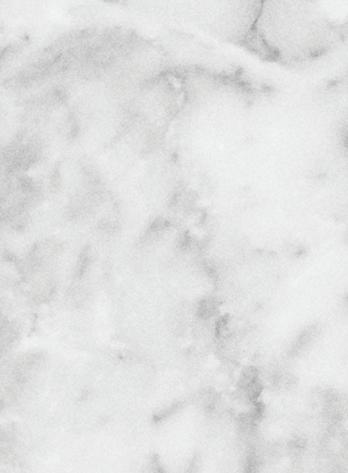
Dinner is served at ‘Pebbles’ restaurant where Chef Dipen Patel fuses flavours from across the region, a culinary journey that honours the local prov-





enance. We try the Tea Tree Smoked Chicken, McCrae Wild Mushroom Rigatoni, Saltbrush Polenta Chips and Mornington Peninsula honey crème brulee with honeycomb almond biscotti- delicious.
A short drive to the newly opened Alba Thermal Hot Springs, where all our day spa dreams come true, we spend a day bathing and soaking up the spring’s natural surrounds. Book a decadent treatment in the Alba Spa and dine in Thyme, with a locally sourced menu curated by well-known chef and author Karen Martini.
The final stop on our taste and tour of the Mornington Peninsula is the world class winery and vineyard Point Leo Estate- home to an impressive and evolving outdoor sculpture garden. A destination winery, that includes the popular PT Leo restaurant, cellar door and interactive sculpture park.
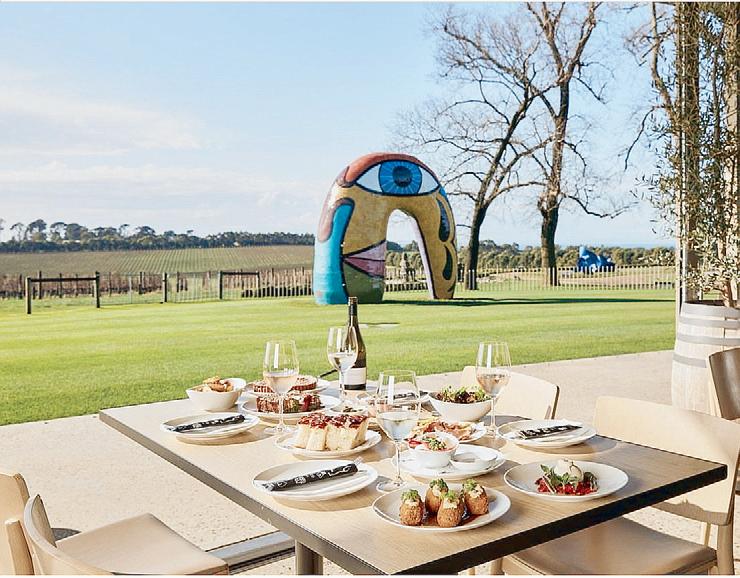
A new Warwick digital CBD Heritage Walking Trail on the Southern Downs Regional Council’s official destination app is set to showcase the town’s heritage.
As one of Queensland’s earliest settlements, Warwick is home to some of the state’s most stunning architecture and many of the town’s magnificent heritage-listed buildings still stand proudly today.
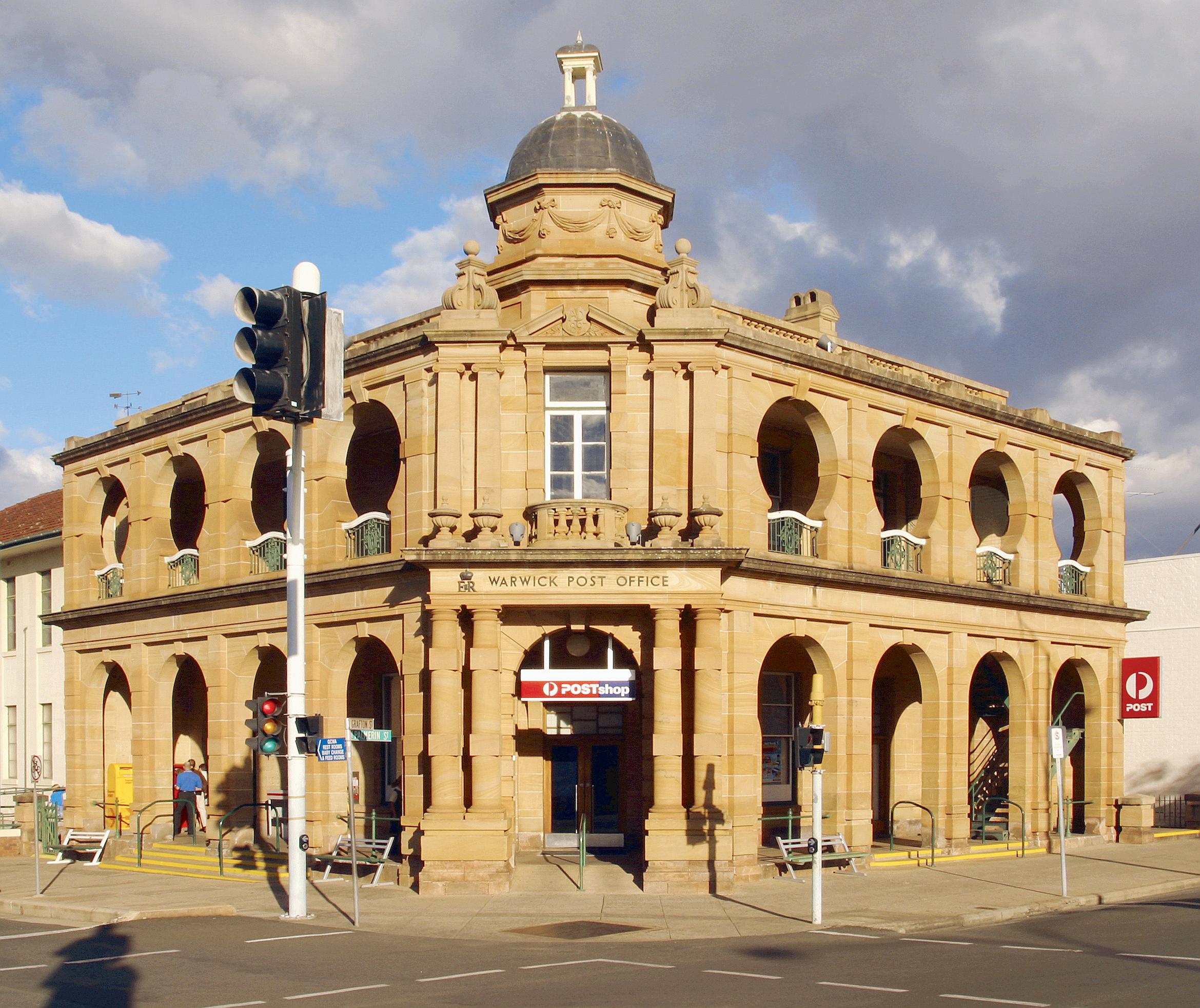
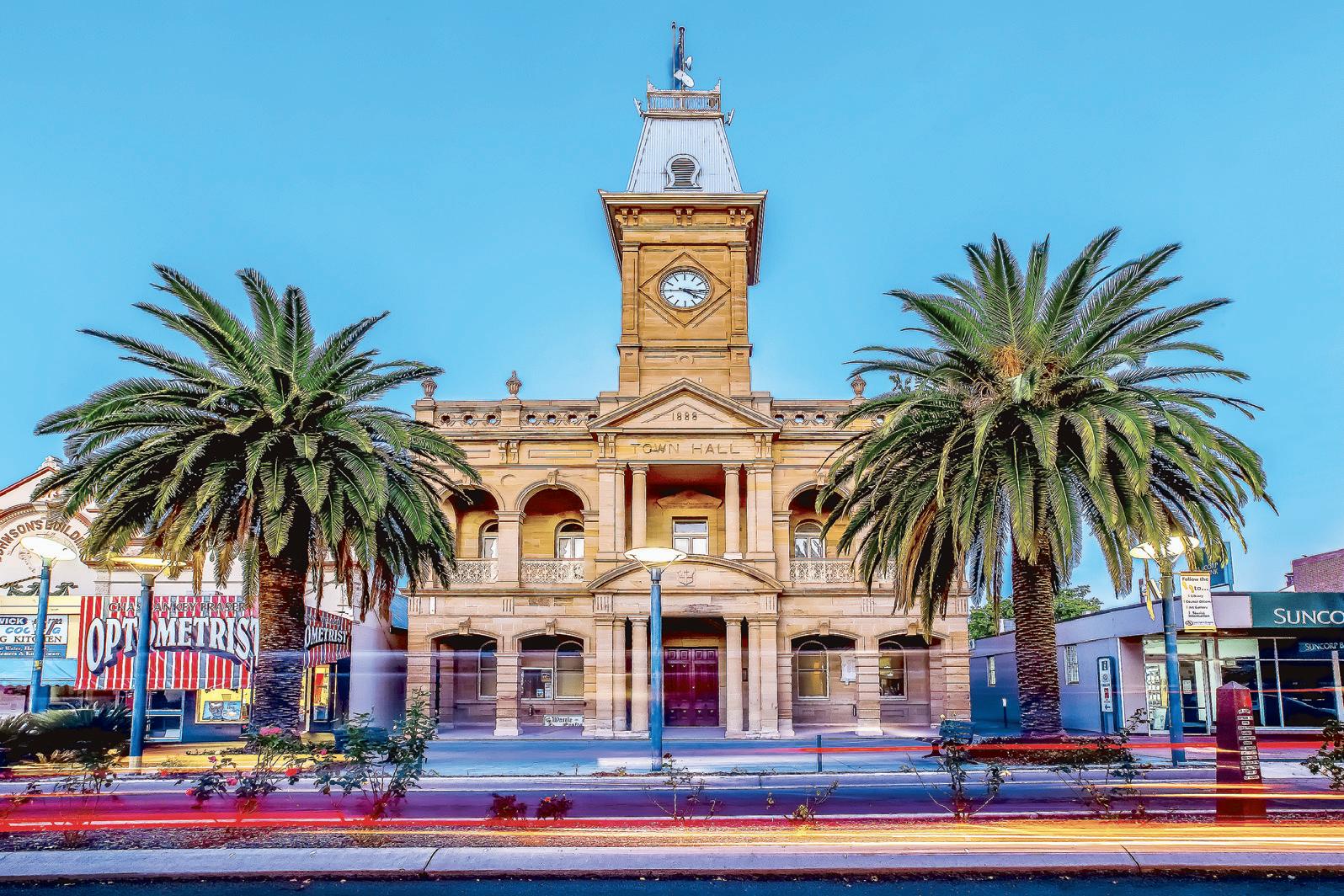
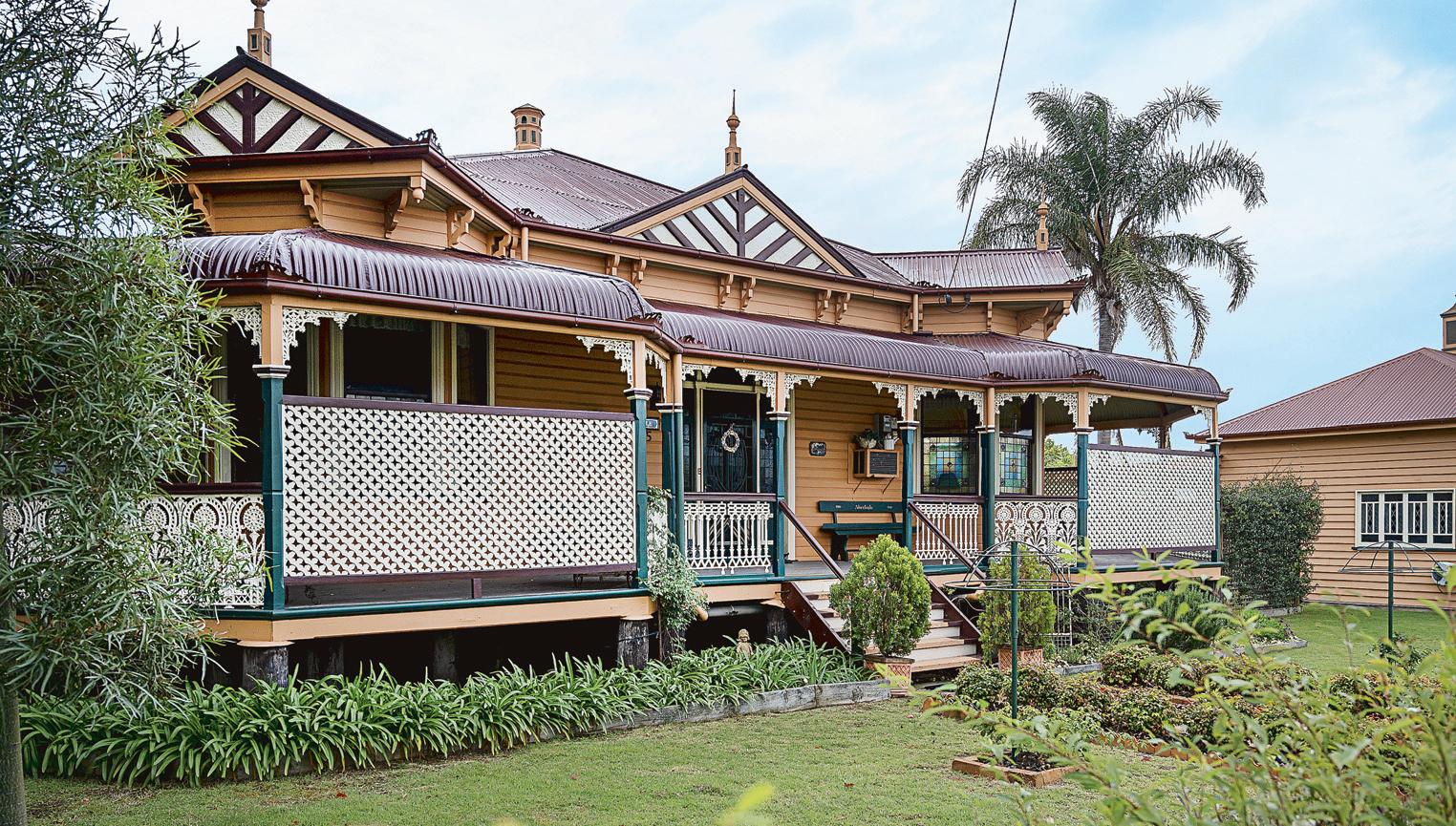

The Warwick Town Hall, St George’s Masonic Centre, St Mary’s Catholic Church, St Mark’s Anglican Church and the Warwick Railway Complex are testament to Warwick’s rich history and the easiest way to locate and learn about the buildings that date-stamp intriguing moments in its timeline is to follow the new Warwick CBD Heritage Walking Trail on Council’s official destination app.
Southern Downs Councillor Marco Gliori said the digital trail was an exciting addition to the growing number of online tourism resources available for visitors and locals to explore the region.
“Travel back in time and discover some of Warwick’s grandest heritage buildings with the new Warwick CBD Heritage Walking Trail,” Councillor Gliori said.
“The best way to find and admire all of this magnificent architecture is to download the official Southern Downs & Granite Belt App and start planning your next Southern Downs adventure today.
“Other trails on the app to help visitors and locals explore our wonderful region include the Dunny Dash Arty Trail, the Artistic Stanthorpe Walking Trail and the Artistic Warwick Walking Trail and Council will continue to add to the app to put more information at our fingertips.”
Betty Wells has been volunteering at the Warwick Visitor Information Centre (VIC) for more than ten years.
She said the app made showcasing region’s treasures more accessible and is a great resource for VIC volunteers who are new to the region.
“Warwick’s first land sales occurred in 1850, and as the town became established, stone from local quarries was used to construct the many fine sandstone public and private buildings for which Warwick is justly famous.
Then after 1900, a second building boom gave Warwick a legacy of many fine Federation-era timber and brick
buildings,” Ms Wells said.
“If you are not a long-time resident, this knowledge is not readily available and the app now makes this part of our local history accessible to everyone.
“The Warwick CBD Heritage Walking Trail is 6.75 kilometres long and will take just under two hours walking time to complete, plus extra time to read the history and admire the craftsmanship. If the total distance is too far to cover on foot, explorers may prefer to jump in the car to look at some of the buildings that are furthest from town such as the Warwick National School, the National Hotel, the Warwick Railway Complex and Cloisters.”
Everything visitors and locals need to know to follow the Warwick CBD Heritage Walking Trail can be found on the Southern Downs and Granite Belt App which can be download for free from the App Store or Google Play.
Journey into history and see the landmarks that define New South Wales on an adventurous 11-day tour to the Central Coast, Hunter Valley and the famous Blue Mountains.



Deliver post along the lower Hawkesbury, visit the only pearl farm in NSW, explore pioneering homesteads and see the famous Christmas Lights Spectacular at the Hunter Valley Gardens on a trip that brings together magnificent scenery and national heritage areas with day trips, we will be based for three nights at both Forresters Beach on the Central Coast and BlackHeath in the Blue Mountains.”
First night is in Coffs Harbour before heading on to Port Macquarie and Bulahdelah and crossing the range to the Hunter Valley.
The Hunter Valley Gardens’ remarkable annual display of Christmas lights in the largest light event in the southern hemisphere. Explore the gardens during the day then return for an evening filled with light, white-topped trees and snow caves.
In Cessnock, gateway to the country’s oldest wine region, the Marthaville Arts and Cultural Centre is based at an old sawn-timber house, and is now home to an extensive range of locally handcrafted arts and crafts.
Rural Wyong has Alison Homestead, set on two hectares of land where, in 1825, it became the nation’s first land grant.
Norah Head Lighthouse, built in 1903, was the last manned lighthouse in the State and the last major colonial light station constructed in NSW before control of coastal lights was passed to the commonwealth.
Bound by water on three sides, The Entrance is the main marine mouth connecting Tuggerah Lake to surrounding beaches and Forresters Beach is the perfect base for day trips.
Cruise to Broken Bay Pearls, the only pearl farm on Australia’s East Coast, and its oyster leases on the scenic lower Hawkesbury River. Follow the story of the Australian pearl from ancient beginnings to modern farming and see an immersive pearl grading session.
A sweet stopover is lunch and a tour of the chocolate and nougat factory of Confectionary producers Nougat Limar, Bon Bon Fine Chocolate and the Sydney Marshmallow Company.
Set in peaceful surroundings at West Gosford, the Henry Kendall Cottage




and Historical Museum was once the home of the pioneer poet, while Mount Penang Gardens has 12 themed garden rooms set on and around a sculptural plateau.
Firescreek Botanical Winery is a lush farm and garden producing award-winning wines from a variety of fruit and botanicals. It offers a wine tasting with a twist – four Firescreek Botanic Wines are paired with handmade chocolates.
Join the Riverboat Postman cruising the magnificent scenery of the lower Hawkesbury, delivering mail to isolated settlements along the waterways while hearing entertaining anecdotes of river life.


Get an overview of the magnificent scenery of the Blue Mountains from Govetts Leap and Echo Point lookouts, before riding the Scenic World Railway, and then taking the cableway to the forest floor and the Skyway high over the canyon for first-class views of the famous Three Sisters.


The Carrington Hotel in Katoomba is Australia’s oldest remaining resortstyle hotel and a perfect setting for high tea before heading on to Leura to visit Bygone Beautys Treasured Teapot Museum, the largest private emporium of antiques and collectibles in the Blue Mountains.

A day in Lithgow begins with a visit to Eskbank House. Built in 1842, it was one of the first house museums in NSW when it opened in 1966.
A museum on the site of the original Commonwealth small arms factory tells the story of British influence and houses a comprehensive collection of experimental weapons. In later years, the factory made sewing machines, sheep shearing handsets, handcuffs and other commercial items.
The historic settlement of Hartley with its well-preserved sandstone buildings, is a snapshot of life in the early 19th century.
The Bylong Valley Way, part of the Greater Blue Mountains Touring Route, has an engaging mix of stunning scenery and sleepy towns on the way to Muswellbrook.
Head home through Tamworth, Armidale and Glen Innes, and the scenic Washpool Park to Grafton and Ballina to tick off some more NSW regions.
A fantastic tour to finish the year with.
Visit cttravel.com.au or call 5391 1648.






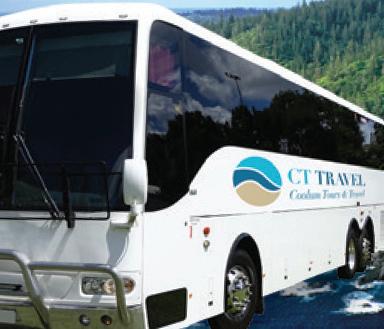

Celebrate the Icons of NSW. Deliver Post along waterways, visit NSW’s only Pearl Farm and witness the majestic Blue Mountains.
11 Days - 26th Nov - 6th Dec
It’s essential as a journalist to ask questions.
So, when someone says to you: “I’m going to Germany’’ the question you need to ask yourself is: “Well, why aren’t I going to Germany as well?’’
The answer will always be: “There is no good reason for you not to go to Germany, just do it.’’
This goes back half a lifetime when, for no reason, a mate asked: “Do you want to go to London?’’
Normally I’m quite conservative in my answers and have to weigh them up but I simply said: “Why not.’’
So when the opportunity came up to travel back to Europe again this year I thought exactly the same.
Why not? It makes perfect sense, even though it doesn’t.
There were so many other things going on but, let’s face it, when the location was explained to me I knew I had to go.
It was where we drove in the ‘70s on our way from London to Munich ... four Australian boys in a van.
We were driving along an autobahn from Bonn to Stuttgart in South West Germany, when this motorcade whizzed passed us. It was the German Chancellor at the time, Willy Brandt.
Germany was a divided country back then and Bonn was the capital of West Germany.
A wall divided the city of Berlin as well as the border fence, which formed part of the Iron Curtain that separated East and West during the Cold War.
Fast forward to the German spring of 2023 and this was where we would be spending three weeks, on the Rhine River between Koblenz and Bonn.


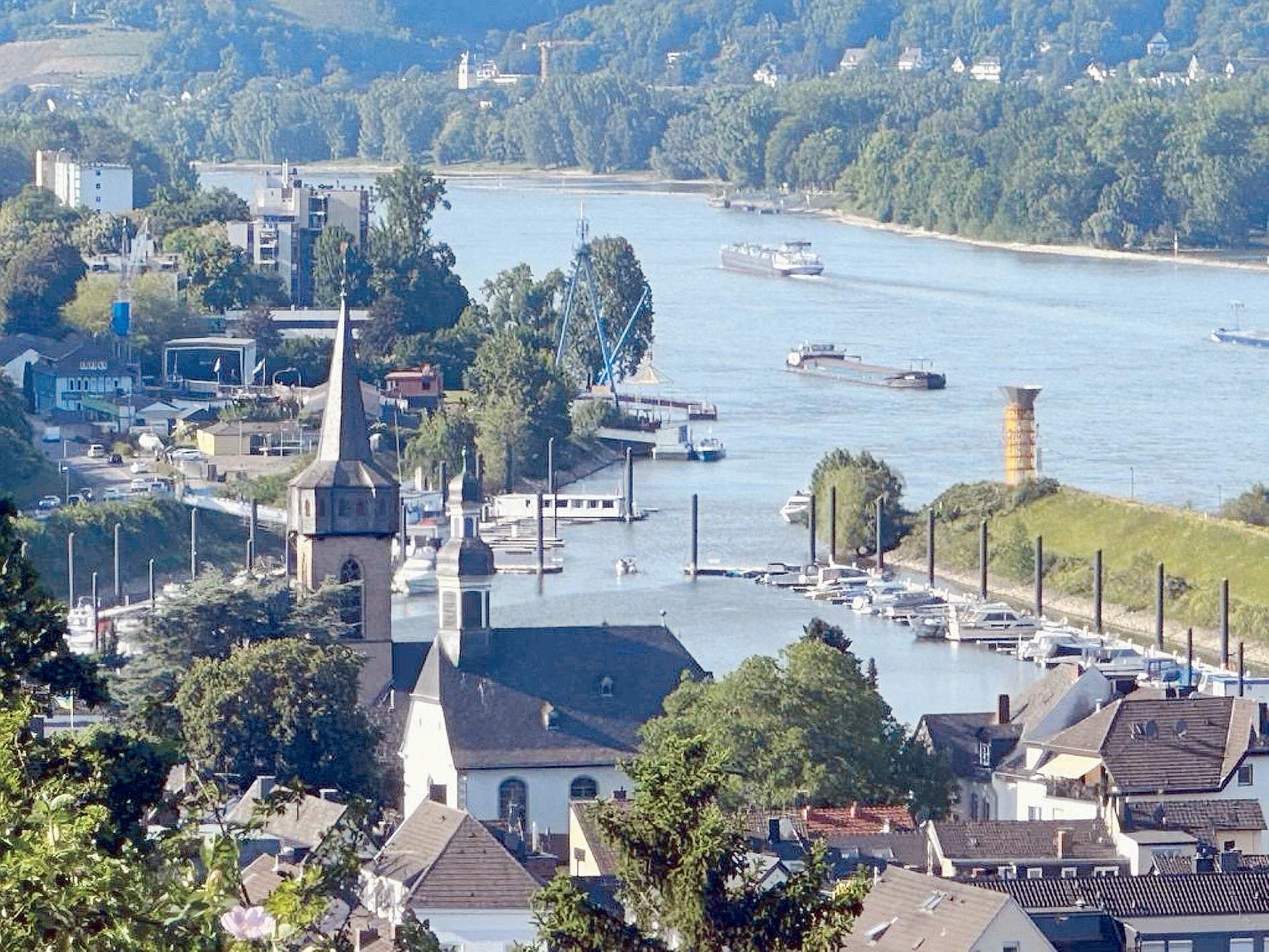
There was no way I could say no.
The flight to Frankfurt reminded us of how flexible you need to be these days with travel.
A delay at Brisbane Airport due to technical issues saw Emirates book us into a hotel for the night so we could fly out the next morning.
That meant we missed the connecting flight in Dubai, so another 12-hour delay and another hotel.
The airline is to be commended for the way they responded in a difficult situation. Disruption teams were at the airports to assist where possible.
In the end we were a day late in Frankfurt for the train journey to where we would be staying. Tired but still up for adventure.
It was as if we were backpacking again. Back then we would spend hours
waiting for a ferry, a bus or a train.
This time it was a matter of determining the right train to catch. There were quite a few options.
While the local population often deride the DB ... Deutsche Bahn railway system ... due to late or cancelled trains, we were impressed.
There was basically a train every five minutes from Frankfurt Airport. And the automatic ticket machines were extremely reliable.
Tip One: Separate your cash into a wallet and money belt, and the same with credit or travel cards. You can easily leave something on a ticket counter, especially after a long flight. Don’t do it “when we get there’’ ... do it when you think of it. Thank goodness for the extra pockets in cargo pants.
Tip Two: Don’t be afraid to ask. Entschuldigung ... is a great word in Germany. Excuse me.
Then explain you don’t speak German, that you are Australian. We found the response was always positive.
Tip Three: Don’t enter Germany with preconceived ideas or stereotypes of the people.
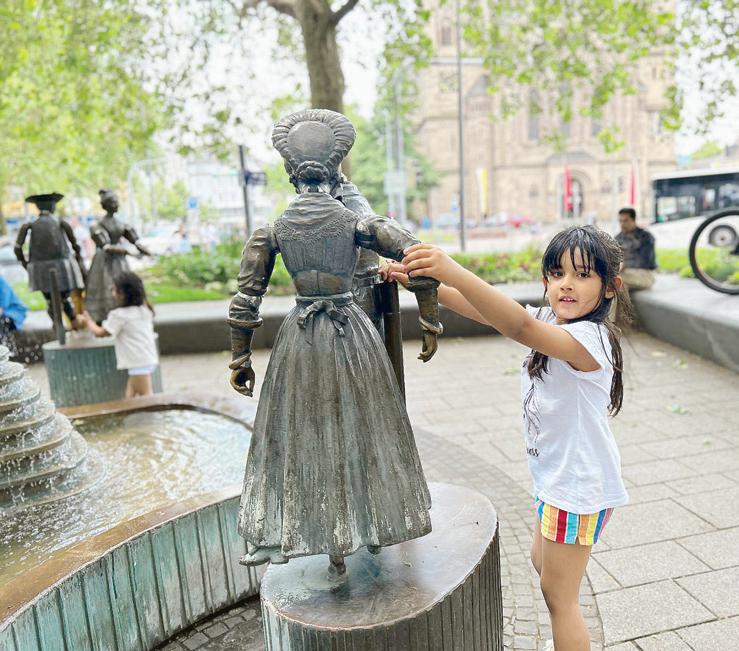

Like anywhere, they value their privacy. Yet we found them to be warm, friendly and embracing.
Particularly in the face of the upheaval around the world in the past 10 years or so that has created a wave of refugees wanting to get to Europe.
Germany has done a lot of heavy lifting in this resettlement of people and have done it admirably.
Now, back to the train journey to the historic town of Oberwinter. It was like gliding through a picture book - fields of barley, Roman walls around towns, church spires reaching skyward and then there are the forts and castles ... they are on just about every bend of the river, every hill.

The cost for about a 130km journey is 30-something euro each, that is when two people travel on a double ticket which is virtually the same price as a single.
Take out travel insurance if you prebook a ticket as anything can happen to upset your timetable.
Better still, once in Germany you can arrange a Deutschlandticket ... e49 for a month’s travel on regional trains, light rail, buses and ferries.
The ticket is valid from the first day of each month but must be cancelled for the following month by Day 10.
It is invaluable if you are staying for a number of weeks, especially when you can put a bicycle aboard when the going gets tough.
Many train operators allow bikes on board but for some you need to reserve a space before you travel.
Check the type of bike as well. There was a train replacement bus that didn’t allow electric bikes.
That brings us to other ways of discovering Germany. There is always the cruise down the river, which rises in Switzerland and flows down through the Netherlands to the North Sea.
Yet cycling, walking or hiking are oth-
er ways was to see the Rhine, as well as by train.
Locals as well as visitors make great use of the wide, mostly level bikeways that follow the river.
Whether on day rides or for a week, you see them with their sleeping bags and tents, their paniers loaded up.
Electric bikes are popular but most still favour the regular mountain bike or sturdy German models.
The one I was riding had been manufactured in the next town along the Rhine to Oberwinter - Remagen.
Whereas my original German adventure was spent mostly on the autobahn, at service centres and camped along the side of the road, this time we chose the one village and intended to get to immerse ourselves in German life.
I sent a photo to my daughter from Oberwinter with the numbers 1543 above the doorway of a two-storey house. No, that’s not the street address, it’s the year it was built.
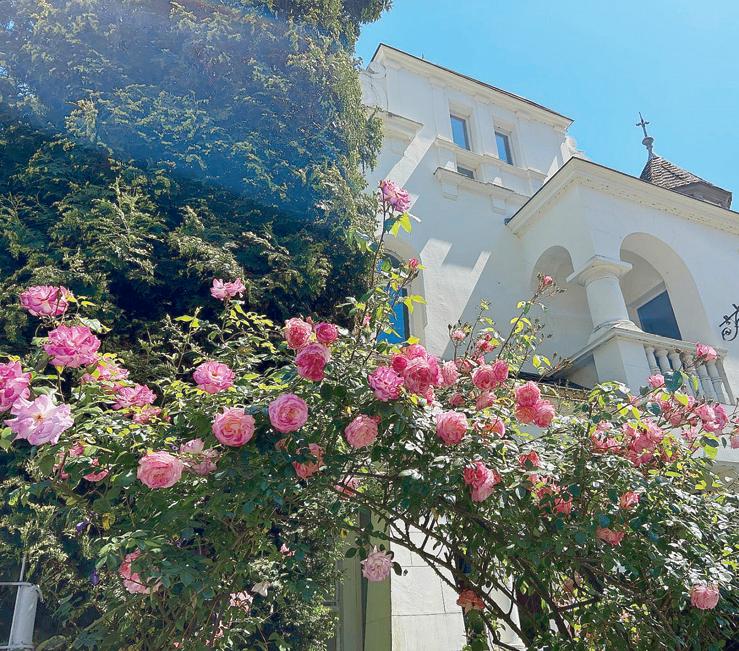
And so it goes. The Romans were here 2000 years ago.
Records show Oberwinter was occupied by 886AD. However, people lived and settled in the area long before this point in time.
Archeological finds can be assigned to the Neolithic period from about 3000BC to 9000BC.
Throughout Germany there are remnants of walls, gates, baths, basilicas and villas. Then there are palaces, temples, bridges and ampitheatres that could seat 20,000.
The first domestication of a wild dog is thought to have been near Bonn. It was carefully placed alongside humans 14,200 years ago.
The middle Rhine villages between Bonn and Koblenz have endured so much through history.


World War Two saw the people caught between two opposing forces.
It was no better illustrated than at Remagen where the railway bridge crossed the Rhine.
The Allies were advancing and the Nazis were trying to stop them.
It became the last bridge across the Rhine to fall.
To typify the torment of war, the American marine who led his troops across the river at Remagen came from German heritage: Company commander, 1st Lt. Karl H. Timmerman. His actions at the time saw him honoured by both armies.
There is a Peace Museum in the bridge pylons on the western side of the Rhine, dedicated to not just this part of history but through many theatres of war and the devastation it brings.
This Middle Rhine region is full of surprises and none more so than the city of Koblenz. It is about 40km south of Remagen - a short train journey or level bike ride.
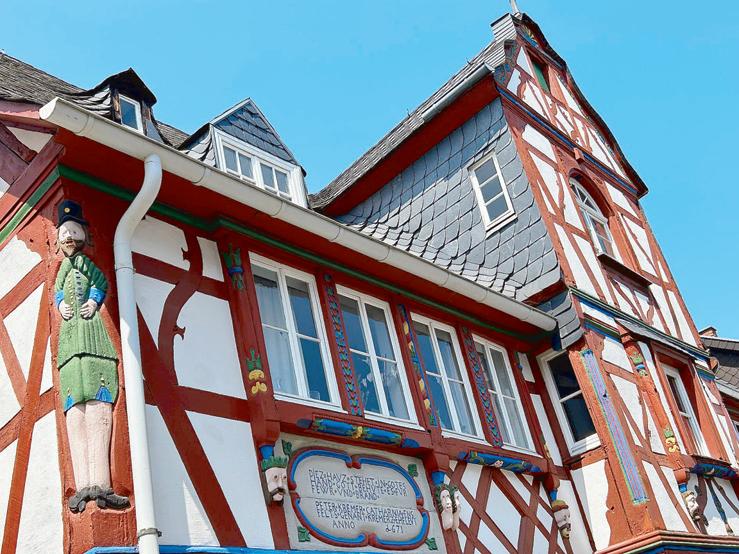
It was a meaningful journey, exploring the site where two rivers meet - the Rhine and the Moselle - and where many battles have been undertaken to seize control of what has long been
known as the corner of Germany.
While the tourist section and Koblenz was very well designed to cope with large crowds interested in the city’s history, what was really outstanding was the architecture on display with the centuries-old buildings alongside the powerful new ones.


This was contrasted with beautiful parks covered over with natural canopies of age-old trees.
It was quite serene, special and calming, even though you were in one of the major cities of Germany.
The old town was an intriguing mix of buildings that had been rebuilt, together with those constructed amid Roman and Medieval foundations. The wide pedestrian-friendly streets formed a framework to link the interesting laneways and alleys.
One unexpected moment was the couple dancing the tango on the banks of the Moselle River with a dramatic backdrop of cliffs and the strategic Fortress Koblenz and Ehrenbreitstein.

Their dance was very intimate, and not expected … it was such a contrasting scene to the fort that was built between 1815 and 1834 to secure the then strategically important junction of the two rivers.
Linking the city’s riverbank parklands and the fort was a modern cable car, which we might not have had intentions to travel on but soon realised it’s a fantastic way to get an aerial view of the rivers, the castles, mansions,
and the palace.
The numbers of people enjoying the riverside walkways and parklands was remarkable … and in the background were contrasting signposts through history.
The dominant figure of a medieval king on horseback held the prominent place at the point jutting out into the convergence of the two rivers, then parts of the wall that more recently divided Germany into east and west were positioned in the park.

The fall of the wall was something I did not expect in my lifetime, and here I was ... standing in front of some of the sections.
Initially in two minds about the cable car adventure, the ticket seller offered both student and seniors discounts so the journey was e15 with an extra e4 for admission to the fort that has seen many, many battles.
That brings us to the Ahr Valley, a major wine-producing area in Germany that is both easily accessible and extremely enjoyable.
The Ahr River joins the Rhine just to the south of Remagen and there is a regular train to Walporzheim, at the head of the valley, as well as a bus service. Yet it is also an attractive journey for avid bike riders.

Vineyards and orchards cover the steep sides of the valley. At the heart is the village of Ahrweiler with its exquisite central marketplace.
This is the northern-most wine re-
gion of Germany, known for its red wines.
Wine-growing and trading have been going on in Ahrweiler for more than 1000 years.

It’s always been a welcoming area. Unfortunately, two years ago, there was a one-in-500-years flood and the town was severely affected. Markers above doorways on some buildings indicate the height of the floodwaters.

Now, Ahrweiler and its citizens have done a superb job rebuilding their beautiful town. Indeed, some of the most picturesque cafes, restaurants and wine gardens are here.
There are walks through the vineyards to more restaurants and wine cellars.
The Ahr Valley was conquered by the Romans under Julius Caesar.
Here, there is an impressive archaeological site containing a Roman house and inn discovered in 1980 during roadworks.
After 10 years of restoration, it is now displayed under cover and provides a fascinating insight into life in the 1st century AD - including under-floor heating, tiled floors and walls, running water, toilets and baths.
In the following century a fortress was built at the mouth of the Ahr into the Rhine. It was called Rigomagus, which is today’s Remagen.
As for our adventures in Bonn and the birthplace of Beethoven, that will need a chapter of its own. A fascinating city.
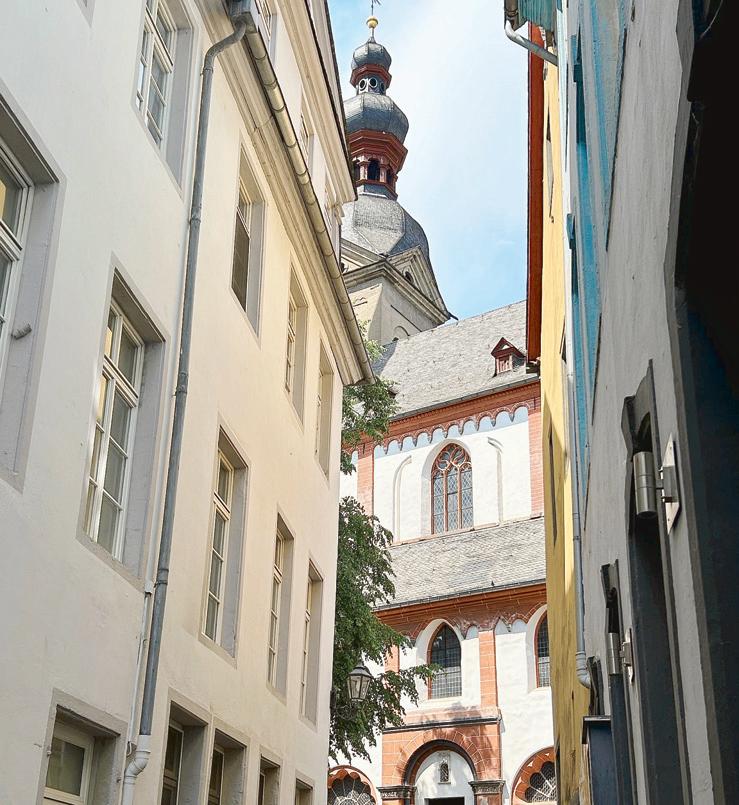
Visitors to CelticFest Warwick on the October long weekend will be able to immerse themselves in the best of Scottish and Irish music.
The festival consists of a two-day ticketed event at the Warwick Showgrounds on Saturday 30 September and Sunday 1 October, and the CelticFringe from Friday 29 September to Monday 2 October.
The craic (fun) at the Warwick Showgrounds will kick off at 2pm on Saturday 30 September, with an outstanding line-up of bands set to entertain and entrance the CelticFest crowd on the main stage throughout the afternoon.
In the evening, The Gathering Irish band will have the audience dancing and singing along to traditional favourites, contemporary tunes, and cover songs.
The Saturday Main Stage afternoon line-up are: Rebecca Wright and Donald McKay, Auld Alliance, Australian Celtic Women, and Highlander.
But wait, there’s more! The Scotsman will lead a family ceilidh (like a bush dance) – hosted by the Darling Downs Irish Club - in The Pavilion at the Showgrounds from 5pm, with admission included in your CelticFest Saturday ticket.

You don’t even need to have any experience, as The Scotsman will call the dancing and you can learn the steps as you go.
And in case you don’t get the chance to tap your feet enough on the Saturday, there’s more music to come on Sunday 1 October, with the main stage again filled with acts from 9am-4pm. You’ll get a second chance to see all the performers from the Saturday afternoon session, plus The Outlanders, LissaKathe Celtic Harp, Munsterbucks and The Scotsman.
It’s The Gathering’s second outing at CelticFest – the band headlined at CelticFest Warwick 2022 – and they are excited to be back, according to Mick McHugh, frontman and award-winning Irish musician.
“The Gathering are very excited to be returning to CelticFest Warwick,” McHugh said.

“Last year was our first visit to Warwick, we felt so honoured to be celebrating Celtic ancestry with people ten thousand miles from the place of their ancestors. It was a kick-arse Celtic weekend and we can’t wait to be back there again in 2023!“
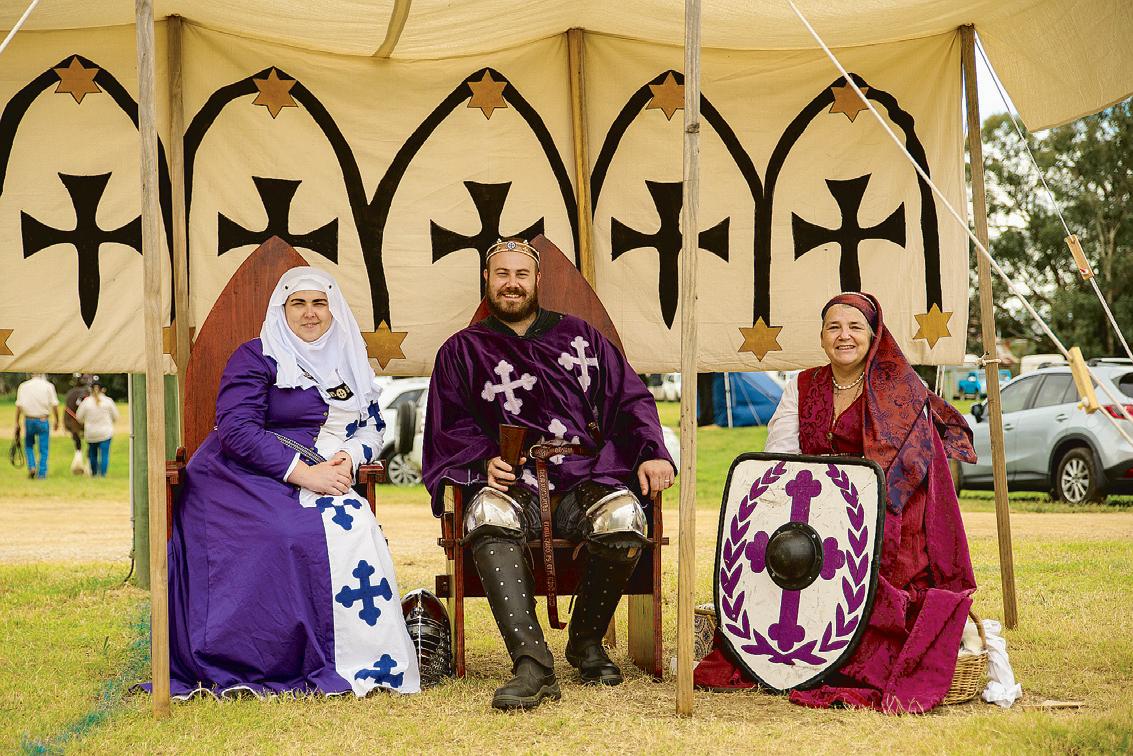
The Gathering prides itself on getting their audiences up and having fun with high-energy Irish dancing traditional tunes and well-known rousing Irish sing-a-longs, blended with an array of popular and classic covers.
The band has recorded for ABC Music, toured internationally, and entertained at major festivals such as Port Fairy Folk Fest and the Australian Celtic
Festival.
The Australian Celtic Women is another act to put high on your list of must-sees at CelticFest – and you’ll have plenty of opportunity to do so!
They will be performing short sets on both the Saturday and Sunday at CelticFest at the Warwick Showgrounds, and a full-length feature show at the Club Warwick RSL on Friday 29 September (this show is separately ticketed by the RSL).
Australian Celtic Women was created to showcase women in Celtic music.

The all-female ensemble seeks to transport its audiences back to the rolling hills of Ireland and the misty moors of Scotland, with heavenly voices, tantalising harmonies, dazzling costumes and whirlwind fiddle playing.
“We’re so excited to be going to CelticFest this year!,” said Miranda Starr, Australian Celtic Women director and vocalist.
“We are looking forward to performing our full two-hour show on Friday night at the Club Warwick RSL with special guests. Then we’ll be performing on the main stage during the festival on Saturday and Sunday. Looking forward to saying hi to old friends and making new ones – Slainte Mhath!”.
Meanwhile, Brisbane-based duo, Rebecca Wright and Donald McKay, are also looking forward to bringing their authentic Scottish music to CelticFest.
“This will be our first time perform-
ing in Warwick, and we can’t wait! We love having the opportunity to pop on our kilts and share our songs with an appreciative audience, and we know that CelticFest will be a wonderful celebration of Celtic culture.”
And The Scotsman (aka Graeme McColgan, who is also one half of the Auld Alliance duo) said: “Looking at the lineup for 2023, I cannot contain my excitement to share the stage with such incredible acts. This will be a crackin’ weekend of tunes, dancing and laughs. See you all there!”
CelticFest tickets are available online now from celticfestqld.com.au.
Pricing for an adult ticket is $20 for Saturday, $25 for Sunday, and $35 for a weekend ticket (Saturday and Sunday). Pensioner pricing is $15 for Saturday, $20 for Sunday and $30 for a weekend ticket. Children’s tickets (for schoolaged children between 5-17), are $5 for Saturday, $5 for Sunday and $10 for a weekend ticket. Children under five are free.
CelticFest would like to acknowledge the support of the Regional Arts Development Fund (RADF).
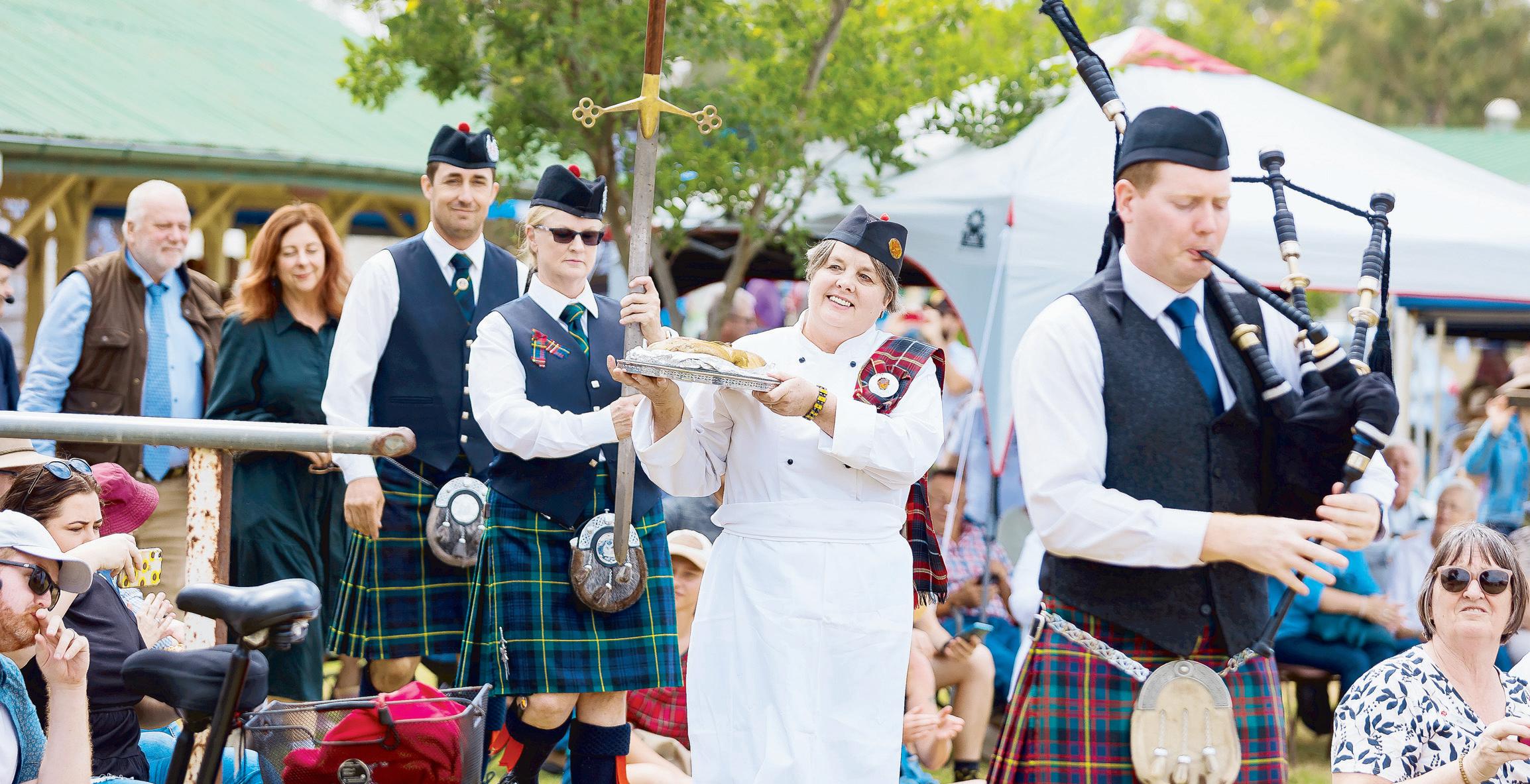
RADF is a partnership between the Queensland Government and the Southern Downs Regional Council to support local arts and culture in regional Queensland.
CelticFest would also like to acknowledge the support of Tourism and Events Queensland’s Queensland Destination Events Program (QDEP).
24 Cinematographer known for Dune and The Batman – Fraser (5)
25 Prestigious university (1,1,1) (3)
27 Olympian, – Thorpe (3)
28 Aboriginal language of Tasmania (8)
29 Starring Jessica Mauboy, Bran – Dae (3)
31 Town home to giant Ugg Boots (8)
33 Levy (3)
36 Nocturnal bird (3)
38 Compass direction (5)
39 Aboriginal Olympic sprinter, – Freeman (5)
40 Ash (4)
42 NSW electoral division (4)
43 Silence (4)
44 Allays (5)
45 Captain of the Australian women’s national soccer team (3,4)
48 Fashionable (4)
49 Former cricket captain, Steve – (5)
51 Discounts (5)


52 Cigarette ingredient (7)
53 Offspring sister, – Stewart (3)
54 Military rank (7)
55 Stretch (8)
5 Australian hip hop group, – Hoods (7)
6 AFL ball maneouvers (5)
7 Indigenous custodian (5)
8 Olympic swimmer, Leah – (5)
9 Man Booker prize-winning novelist, Richard – (8)
15 Charming (8)
17 Australian-American dual-code rugby player, David – (3)
19 Tropical fruits (7)
21 Small fight (7)
22 Bloodline actor (3,10)
23 Addresses (8)
26 Vase (3)
30 Organisation for astronomers (abbr) (3)
32 Glass half-full advocate (8)
34 The Adventures of –, Queen of the Desert (9)
35 Longtime sport presenter, – Williams (3)
37 Crash leftovers (8)
41 Disturbance (7)
45 Tea break (slang) (5)

46 Paralympic swimmer, – Cole (5)
47 2015 Australian of the Year,, – Batty (5)


50 Burrow (4)
ANSWERS:
ACROSS


1 Shampoo flakes (8)
5 Port Adelaide coach, Ken – (7)
9 Enemy (3)
10 Victorian town near Euroa (7)
11 Tour de France winner from Katherine, NT, – Evans (5)
12 Cricket legend, Shane – (5)
13 South Pacific nation, – Islands (4)
14 Odd (7)
15 Sidney Myer – Bowl (5)
16 Test cricketer, Nathan – (4)
18 Melbourne stadium, – Park (4)
20 Collingwood players, colloquially (4)
22 Ambassador to Austria, Ian – (5)
1 Former Queensland Reds fullback, – Mitchell (4)
2 Fed (9)
3 Star of Halifax f.p and Packed to the Rafters (7,6)
4 Last name of AFL star known as Buddy or Lance (8)
2459 29 684
713 769421 164
961 93 4915
29-08-23
HOW TO PLAY: To solve a Sudoku puzzle, every number from 1 to 9 must appear in: each of the nine vertical columns, each of the nine horizontal rows and each of the nine 3 x 3 boxes. Remember, no number can occur more than once in any row, column or box.
ANSWERS:
742893156
593716482
618425739
481572963
376984215
259361847
835249671
967138524
124657398
The increase in beer prices is seeing a growing number of people turning to home brewing.
Whether they are people who are returning to brewing after giving it away or newbies who have decided to give it a go, there is a definite trend.
For those of us who are regular brewers (I have been doing home brewing for more than 30 years), we have known about the value and satisfaction that comes from creating a drop which is cost efficient and more importantly, tastes good.
Home brewing companies offer a greater range of brews than ever before and when coupled with a growing number of different yeasts, malts, hops and additives, you can really start to develop a quality drop.
Home brewing supplies shop owner Cameron Mole has notice a rapid uptake of people turning to home brewing.


“There are a few reasons why people are turning to home brewing and it is not just about the price,” Cameron said.
“I have younger people coming in wanting to recreate a brew that they enjoy and they may be trying to replicate their favourites craft beers which are expensive.
“Older brewers simply want to produce beers that are easy to make, cost efficient and you can produce in volume.
“I think another thing that has changed is that people are becoming more aware that home brews come in many different styles, from pale ales to lagers, stouts, porters ….you name it and you can make it.”
Cameron said people have a misconception that home brews are pretty rough and in years gone by they were because there wasn’t a big range and people probably weren’t taking as much care in what they were doing.
I know I have tasted a few brews that tasted like dirty socks and my first attempts weren’t very flash either.
“This may have deterred many people from having a go at home brewing,” he said.
“These days, you can be as basic or complex as you like and provided that you follow some basic guidelines, you should be able to produce a beer that is enjoyable and equal to any mainstream product.”
Starter kits which include the fermenter and associated equipment, a brew can and 30 PET 750ml bottles are priced at around $80-$90 ( price may vary depending on the outlet).
“Each brew will produce about 30 bottles and once you have the fermenting equipment, it’s about $30 for a brew and additive (dextrose, malt etc) which equates to about $1 a tall bottle.”
Cameron said many brewers were opting to keg their brews which avoided the hassle and time of cleaning and bottling.
“Keging your beer isn’t complicated, there is an initial cost in getting set up but once you are, it becomes very cost effective,” Cameron said.
“You can convert an old working fridge and depending on what you want
and the volume you are after, a keg, gas bottle, hose, spout and connectors will cost around $400. You will have a set up that will last for years and you will have draft beer on tap.
“If you want to go upmarket, they’re many different types of kegerators in the market - purpose built cooling units complete with taps and hoses.
“No matter what you put your home brew into, the best thing is that you know you made it.”
There are home brew clubs and competitions around the country, many are listed online so simply type in “home brew clubs” in your search engine.
Member numbers growing at a steady
rate, especially with the government hiking up excise on beer.
If you have thought about having a go at home brewing, there’s no better time to try it. You will find plenty of avenues of support - home brewers love talking about their creations and offering tips ( though some brewers will keep some secrets to themselves).
Give it a go, you may surprise yourselves in just how easy and rewarding it can be.
To ensure a good brew:
· Make sure all your equipment and bot-
tle are cleans and sterilised
· Make sure your yeast is healthy(Heat is an enemy of yeast and cold weather can inhibit fermentation. There are a growing number of yeasts that function in ambient temperatures and are more suited to warmer weather).
· Try to use good water (preferably water that isn’t full of town chemicals - the purer the water, the better the result)
· Be patient, fermentation is a “living” process so let your yeast do its thing at its own pace (if you have any doubts about the progress of your fermentation, ask you home brew supplier) If you are starting out, don’t be afraid to ask for advice
Whether it be maximising your money on the road or taking deep dive into relationships, there are plenty of workshops happening across the region to recognise the valuable contribution of seniors in the community.





Sunshine Coast Libraries are hosting an exciting calendar of events and workshops for people of all ages to celebrate Queensland Seniors month (October 1-31).

Sunshine Coast Council Community Portfolio Councillor David Law said


Queensland Seniors comprised many people including volunteers, those in the workforce, community leaders or carers, grandparents and advocates.
“Seniors Month provides opportunities to promote positive community attitudes towards older people and ageing, facilitate community participation and enhance community connections,” Cr Law said.

“There are many free community programs on offer including how to get started with family history, refresh-










ing digital skills by creating images in Canva or navigating your way around Facebook Marketplace.
“Challenge your mind and have some fun at the trivia event, learn how to make a bee hotel for solitary bees or enjoy a free fun, hands-on workshop with relationship coach Lisa Jayne to create stronger, happier and healthier relationships with yourself and those around you.” Registration for workshops and sessions by visiting Council’s Libraries website.

or a destination that honours your loved one’s wishes, our dedicated team will make sure that your commemoration becomes a heartfelt reality.
Drysdale Funerals services are designed to give everyone the opportunity to say goodbye to their loved one with respect, dignity and compassion. We are here for you.







You’ve got to start somewhere and yes I’ve probably over planted but it’s so nice to have some lettuces and spinach in and growing.


There’s nothing better than a nice garden - a fulltime job and other commitments mean this is currently covered in grass. But I’ve made a start.
Spring has well and truly sprung and thoughts have turned to planting out my first proper vegetable patch in two years – sort of.

With a lot of the garden still full of grass, weeds and wild lemon grass (and time running out to get things growing before it gets too hot for young seedlings) I decided to empty out my four colourful rectangular raised garden troughs so I could at least grow a few small tomato varieties, some leafy greens, some mint and a bit of a strawberry patch.
The bigger garden will have to be a work in progress, I think. But a trip to the nursery for some good quality potting mix and a selection of hardy looking seedlings later and I’m on my way.
I’ve already been collecting kangaroo paws, fuschia’s and violas for a flower garden I’m planning deeper into the backyard, and I have a collection of herbs in coloured pots in my kitchen, but it feels nice to think that soon I’ll be picking off lettuce leaves and tiny tomatoes to drop into our salads.
I don’t know about you, but I don’t feel as comfortable in my own skin if I’m not growing something. There is something grounding about putting your hands in the soil, planting seeds and watching them germinate, grow, flower and produce food. I love putting out a long table in my (often) extensive vegie patch and eating slowcooked lamb shoulder and a big Greek salad, reaching over and picking fresh herbs or mint or rosemary while sitting at the table with friends and family.
Most of my happiest and earliest memories revolve around plants and gardens, it’s a love that has been passed down by my family – particularly my dad and his older sisters. They’re all gone now but I can’t go past a garden or to a garden shop and see certain flowers, fruits or vegetables and not think of them all.

My dad was an honorary ranger when we lived in Heathcote, Sydney on the edge of Royal National when I was a small child and so it’s hard not to see a big Waratah and not think of him. I’ve tried growing them and the beautiful Brown Boronia’s that my mum loved so much, but they don’t do well here.
He was on night shift a lot when I was small so I don’t remember having a vegetable patch at our place then, but a trip across to Como to my Aunty Marge to
her elaborate vegie patch and strange varieties of chooks was a big treat - as was following her around picking tomatoes, pulling carrots and collecting eggs.
The first vegetables, fruit and flowers I really remember dad growing were when we moved out to South West NSW – back home for my dad. Big vegetable patches surrounded by chicken wire to keep the ducks, chickens and sheep out, days spent helping dad collect the manure from the afore mentioned animals spread around our tiny farmlet. We always had a colourful display of flowers by this time of year. Delphiniums, Larkspurs, Stocks, Zinnias, Flocks and my favourite Pansies- a riot of colour. Dad and I would spend hours getting the display looking amazing and then mum would come along with a pair of scissors and fill every vase in the house with flowers. He’d complain and call her Snippy but the flowers would come back bigger and better and he’d plant the same ones every year for her.
He’d also created a fruit orchard and
a hedge of lilac (propagated from two old lilacs at the back of the house) down one the side of the driveway and geraniums on the other side. The geraniums were from cuttings collected from the gardens of my Aunt’s Ida and Elvie.
My Aunt Elvie’s garden was a favourite. A magic place with peacocks and an old phonebooth repurposed as the outside toilet. There was a big old tree near to her house (with it’s split door that opened in two places) providing shade and a place for the swing frequented by a couple of generations of our big bush family.
But the most magic part was the garden beds snaking around the rest of the block with hardy green grass paths providing access and places to run. In the beds were all the old-fashioned flowers you could imagine including, of course, every colour of rose and geranium you could ever find and vegies companion planted throughout. I loved to amble behind her as she pointed out the origin of everything in the garden, very few were bought from a garden centre
back then and everything had it’s own story – the white double geranium from her grand mother’s house, the rose in honour of her mother, a plant my dad bought her before he went into the army.
The most remarkable thing about this garden was that this oasis existed out on the edge of the Hay Plain, nestled in a bend of the Lachlan River just outside of Booligal surrounded by saltbush, emus and claypans. It seemed like magic that it even existed and maybe it was because once my Aunt was gone the garden slowly went too.
While my aunt’s challenge was a lack of water and the dry air, my challenge is the opposite, here it can be too much water, sand and humidity. However my worst enemy is time.
So, I’m starting small this time. My four little garden troughs are now mostly filled with good potting mix and planted up.
Now I just have to get the liquid seaweed I use to feed my plants and remember to water them!